Cameracraft Assignment competition – enter by June 15th

Cameracraft magazine – Taking your practical photography further


You can now read our embedded page-turn version of the Cameracraft March/April edition – subscribe to get a direct link for PDF download the minute every new issues is published in future!
CCMarApr2022The first magazine test of the new Tamron reached Cameracraft readers in our March/April edition. Now that other magazines are reviewing the lens, it’s time to release David Kilpatrick’s practical user report on-line.
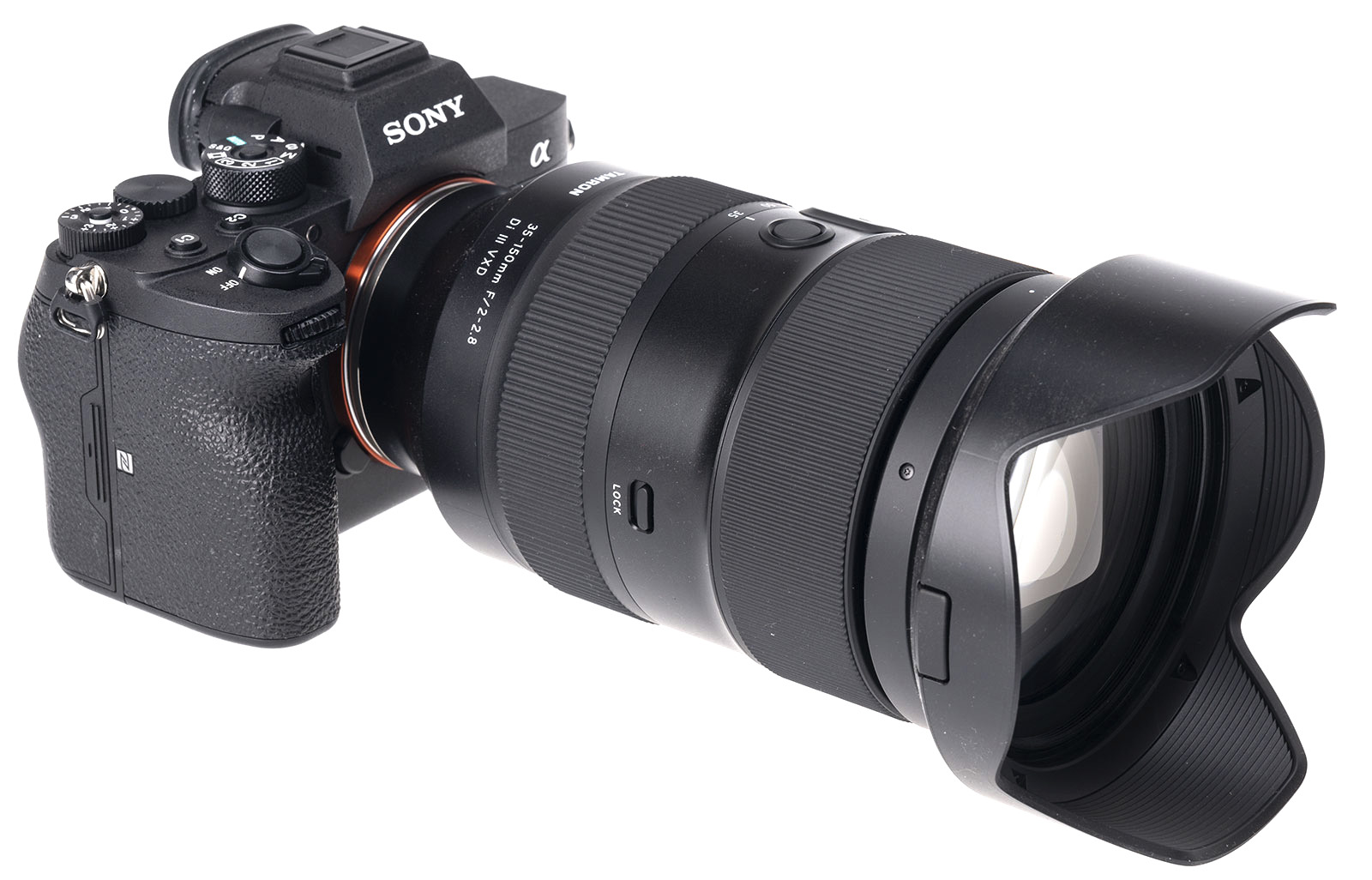
IT’S THE MIDDLE of a dark winter and the new Tamron super-fast ‘group to portrait’ zoom has been doing the rounds of dealers, and we get the chance to use the lens for a good test period starting in January just as the days are getting longer. It’s 3pm and it looks like 4pm with heavy cloud. A quick exposure check says why this lens will be a priority purchase, in a hurry, for wedding photographers. Fortunately the days get brighter and longer during the time trying out this versatile lens.
So many weddings have been postponed due to earlier Covid venue restrictions. To get 1/125s shutter speed, which is very much needed to ensure expressions and fairly small movements are not motion-blurred, it was ISO 2500 at f/2.8 on the day the lens arrived. Between this and the end of useful daylight that changes rapidly to ISO 6400 and beyond, and eventually to 1/30s. Any sensible wedding photographer would now be digging out the f/1.4 lenses, firing up the battery flash kit and hoping the indoor setting works well.
However, there’s a zoom now for Sony full frame users which can cover most weddings or outdoor portrait sessions on its own, replacing a fast 35mm and 50mm and most of the range of a 70-200mm f/2.8.
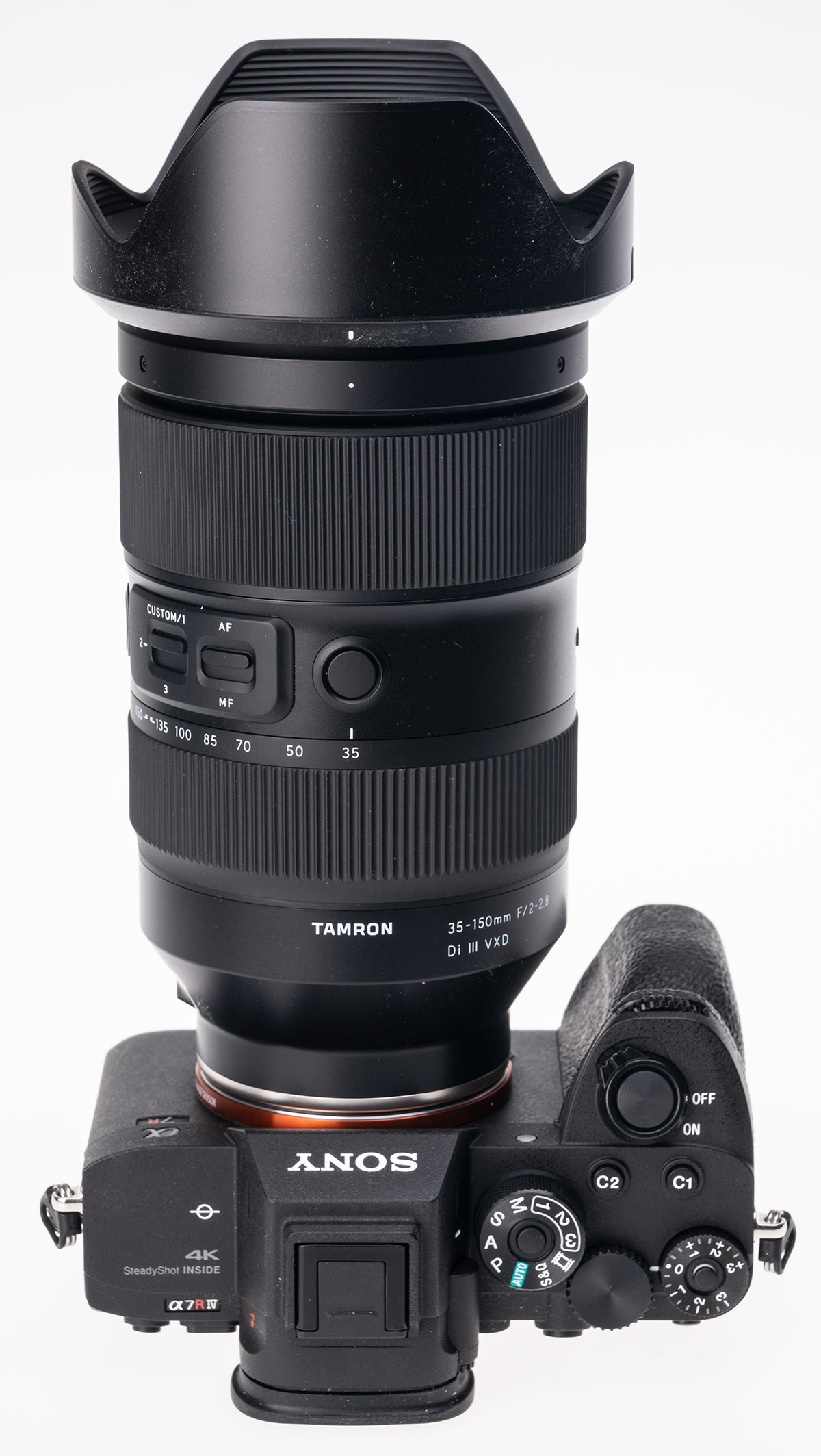
The new Tamron 35-150mm manages to hold its widest aperture of f/2 from 35mm to just short of 40mm, and doesn’t drop to f/2.8 until 80mm.
f/2 35 to 39mm
f/2.2 40 to 59mm
f/2.5 60 to 79mm
f/2.8 80 to 150mm
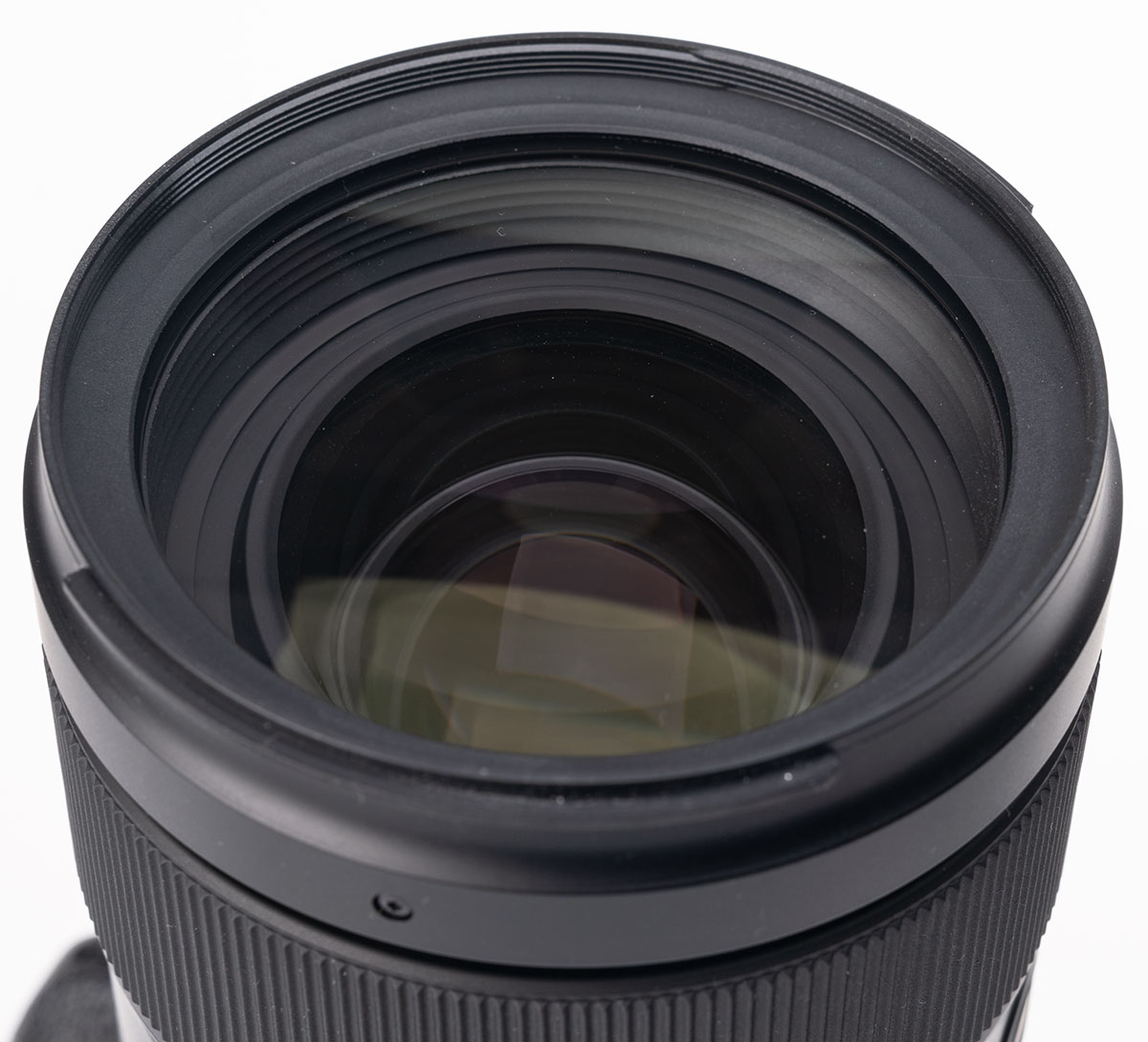
This is good, as so many zooms with a fast minimum focal length lose a third or half a stop with a mere nudge of the ring – those 17-35mm f/2.8-4 lenses made for SLRs were often f/3.2 at 18mm! With studio flash you might set f/2 and start work at the short end of the zoom, but with so many systems studio or location now being TTL and high-speed sync of one kind of another this probably doesn’t matter. Set the lens to f/2.8 or any smaller aperture, and it acts as a constant aperture zoom
How about the chosen focal length range? I’d argue that 28-135mm, with similar aperture benefits, is more useful because there’s a chance of never needing to change lenses. There’s a quick way to check what matches 35mm for groups, using just the long side of a landscape frame. It’s almost the same as the 36mm dimension of the sensor, with an angle of 55° covered horizontally. If you’ve got an APS-C sensor it matches 23mm, on MFT 17mm, on Fujifilm GF and other popular 50MP medium format models it’s 44mm, on the biggest like Hasselblad HD6-100C it’s 53mm.
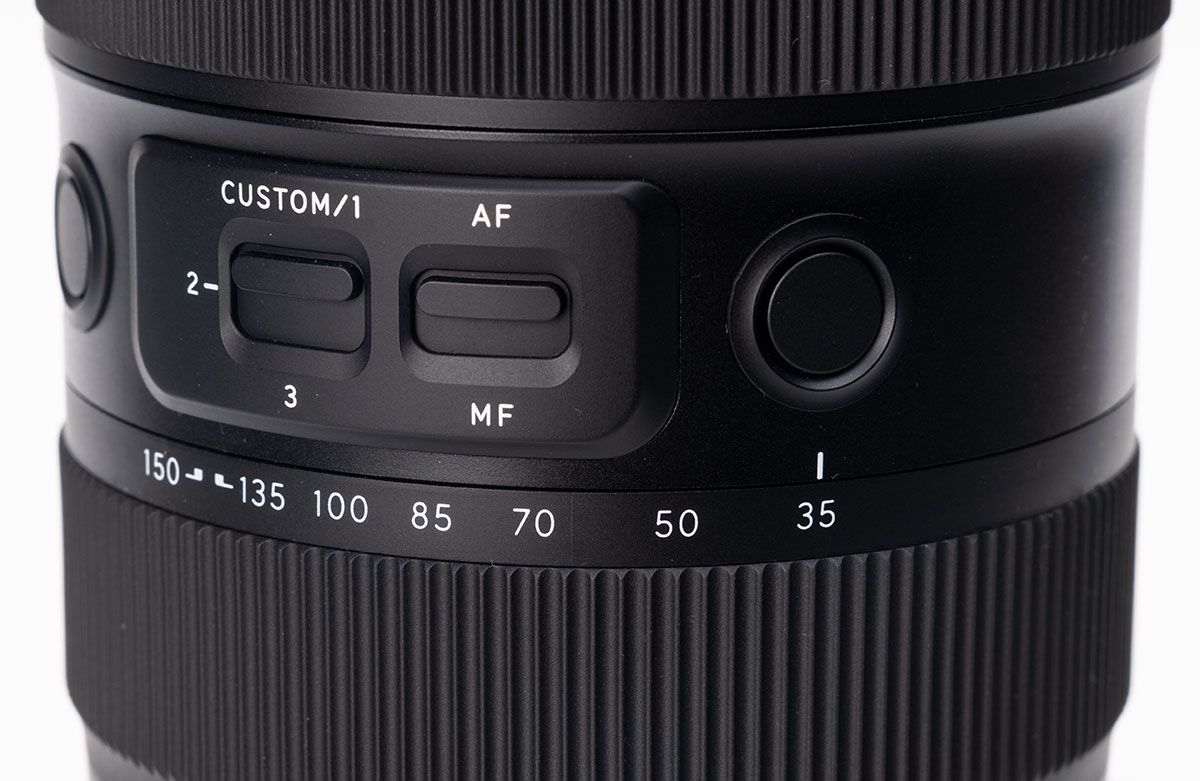
This angle of view works well because many rooms have Golden Ratio dimensions, not unlike an A4 page. Stand near one end of a 5 x 7m room, put a group at a comfortable distance away from the opposite wall, and you’ll cover it well with some of the side walls visible. In a square room, you can just take in the opposite wall with no sides visible. The working distance gives scope for bounced flash, there’s no distortion of body or face width towards the ends of a group even if it’s tightly composed.
In fact having the wide-angle end limited to 35mm may improve your group photography and weddings in particular by making you keep that little bit of extra distance.
However, the real world sometimes throws difficult spaces and camera distances at you. This new Tamron is not an all-in-one outfit. It’s almost essential to have a 24mm, or a zoom such as Tamron’s 17-28mm or Sony’s 16-35mm.
The range
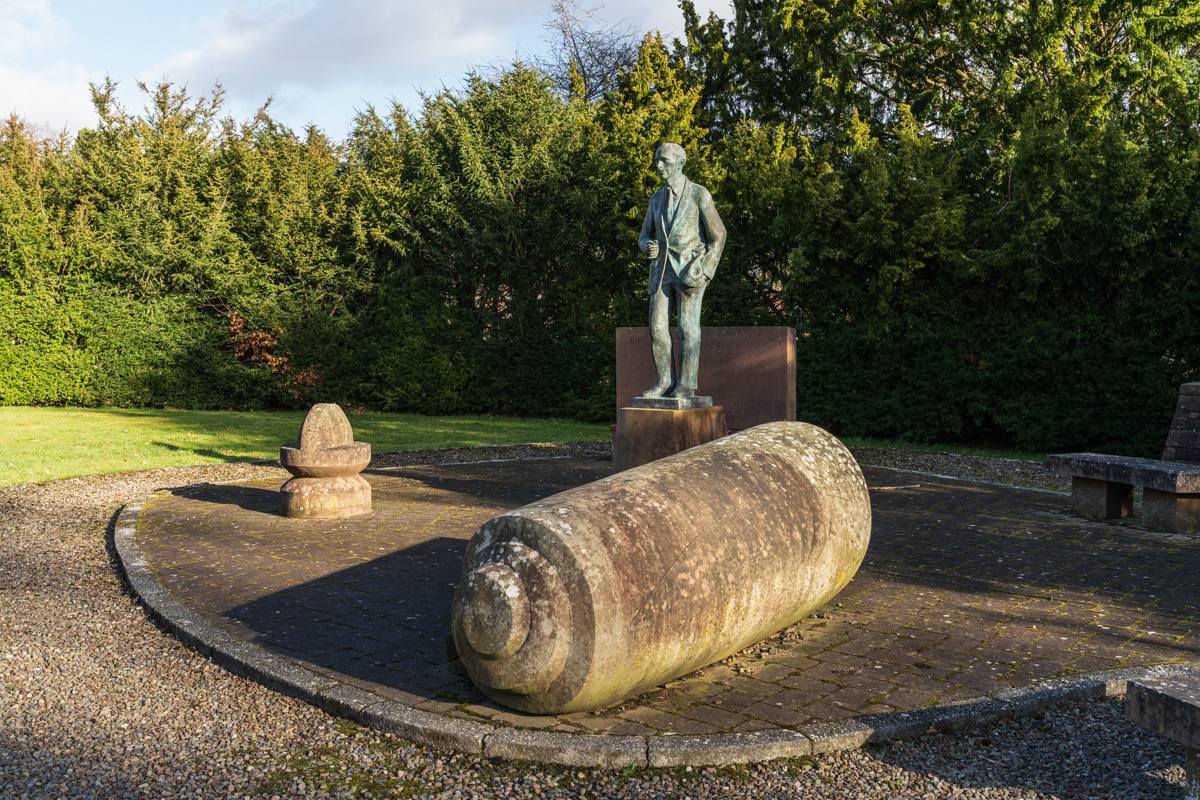
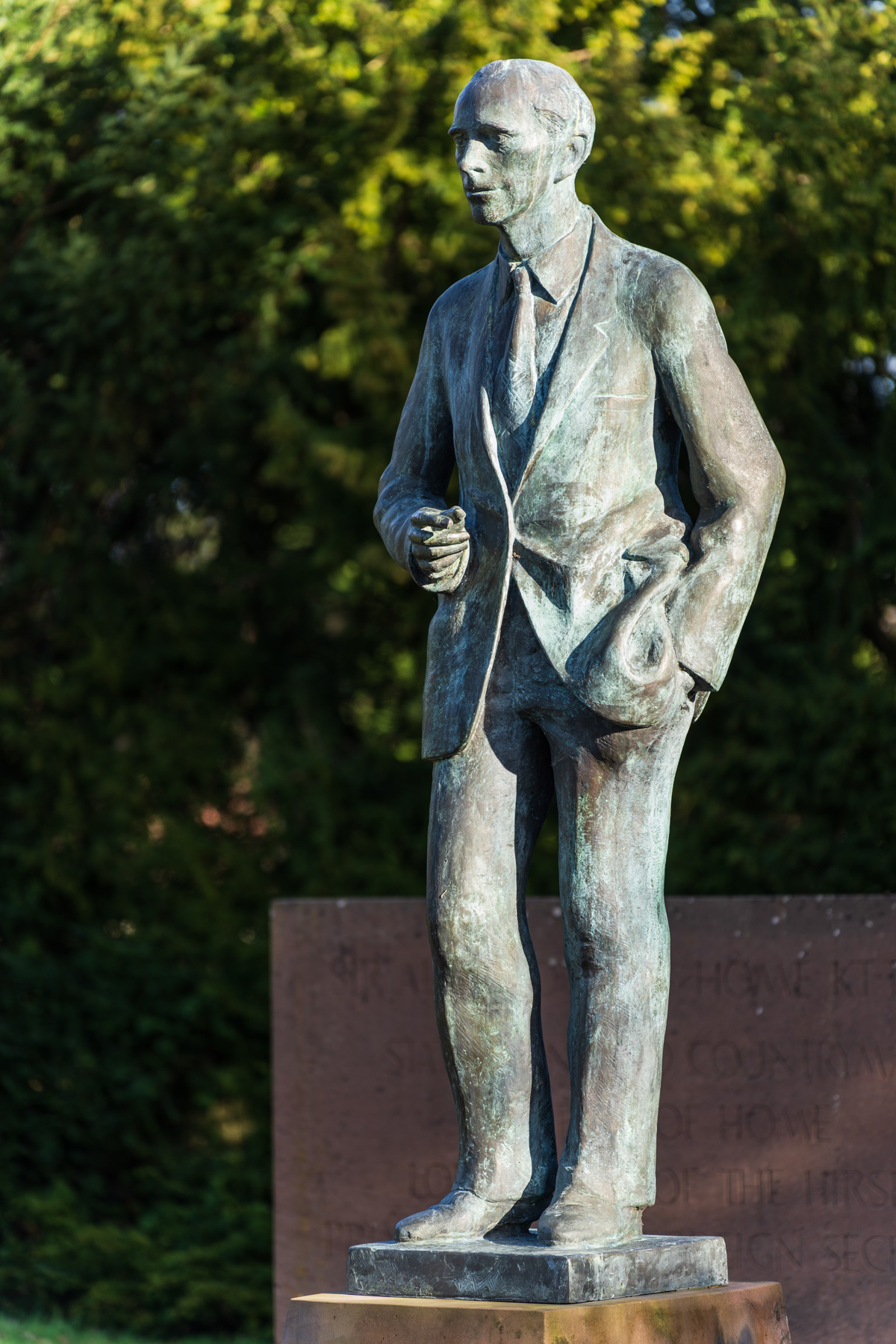
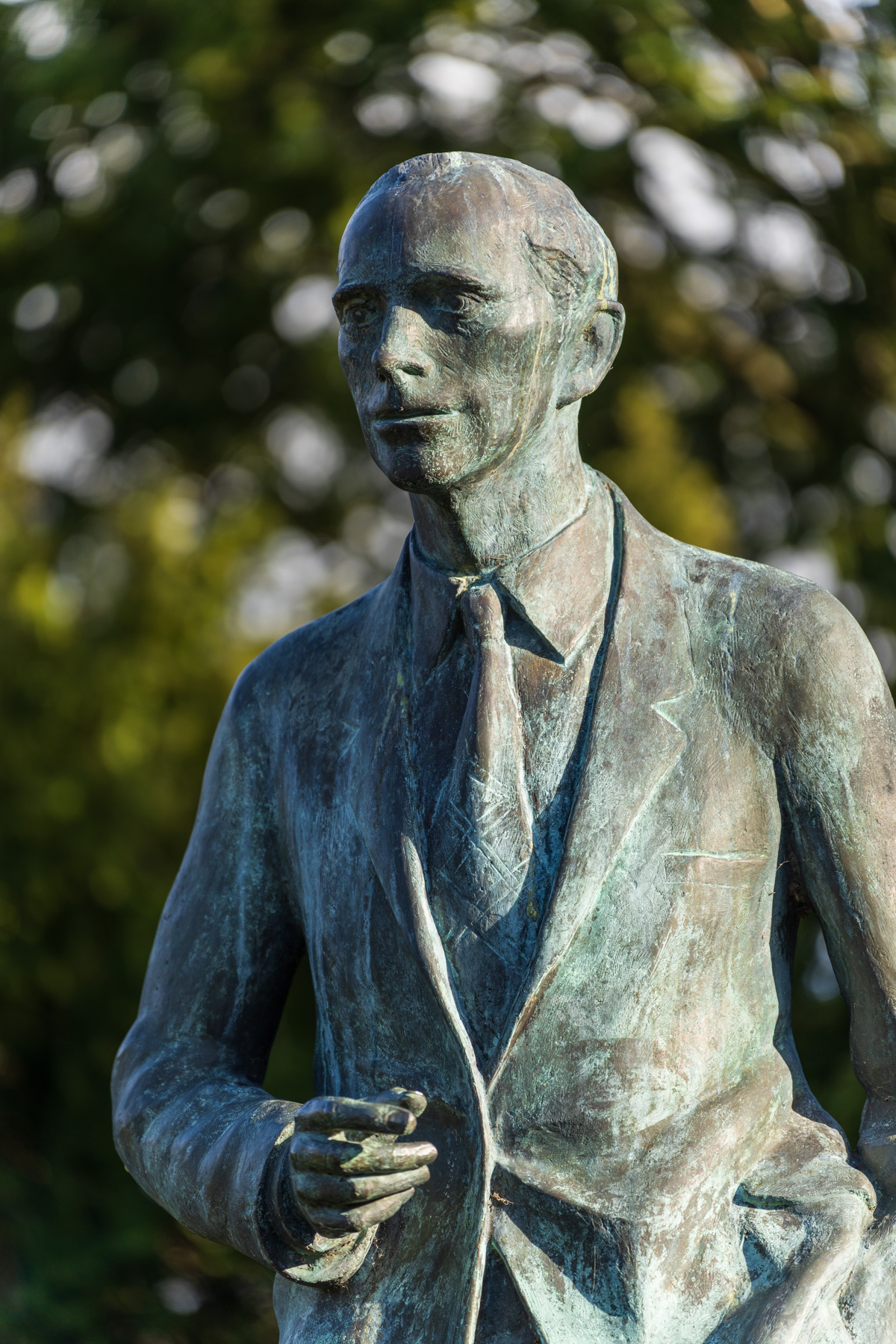
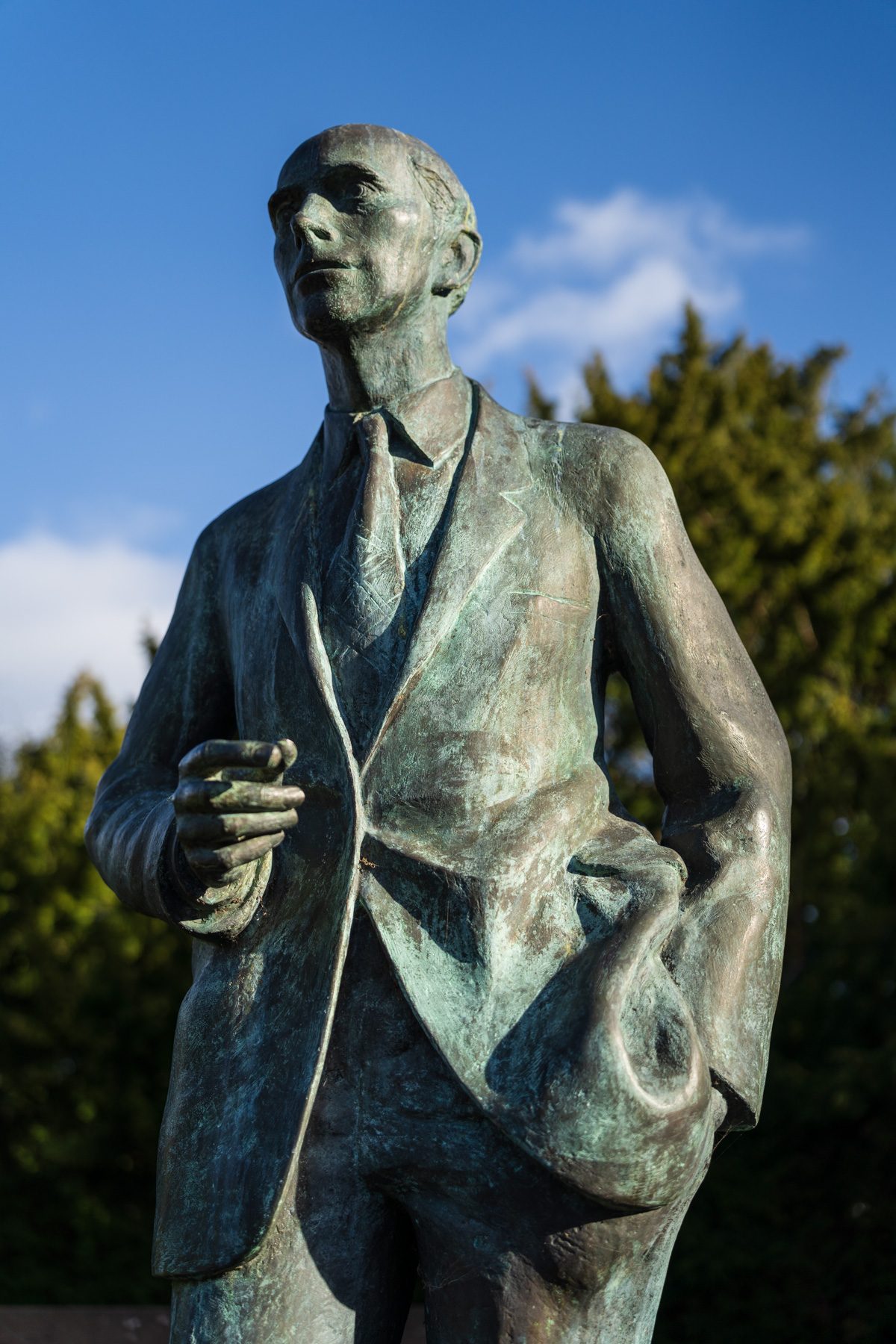
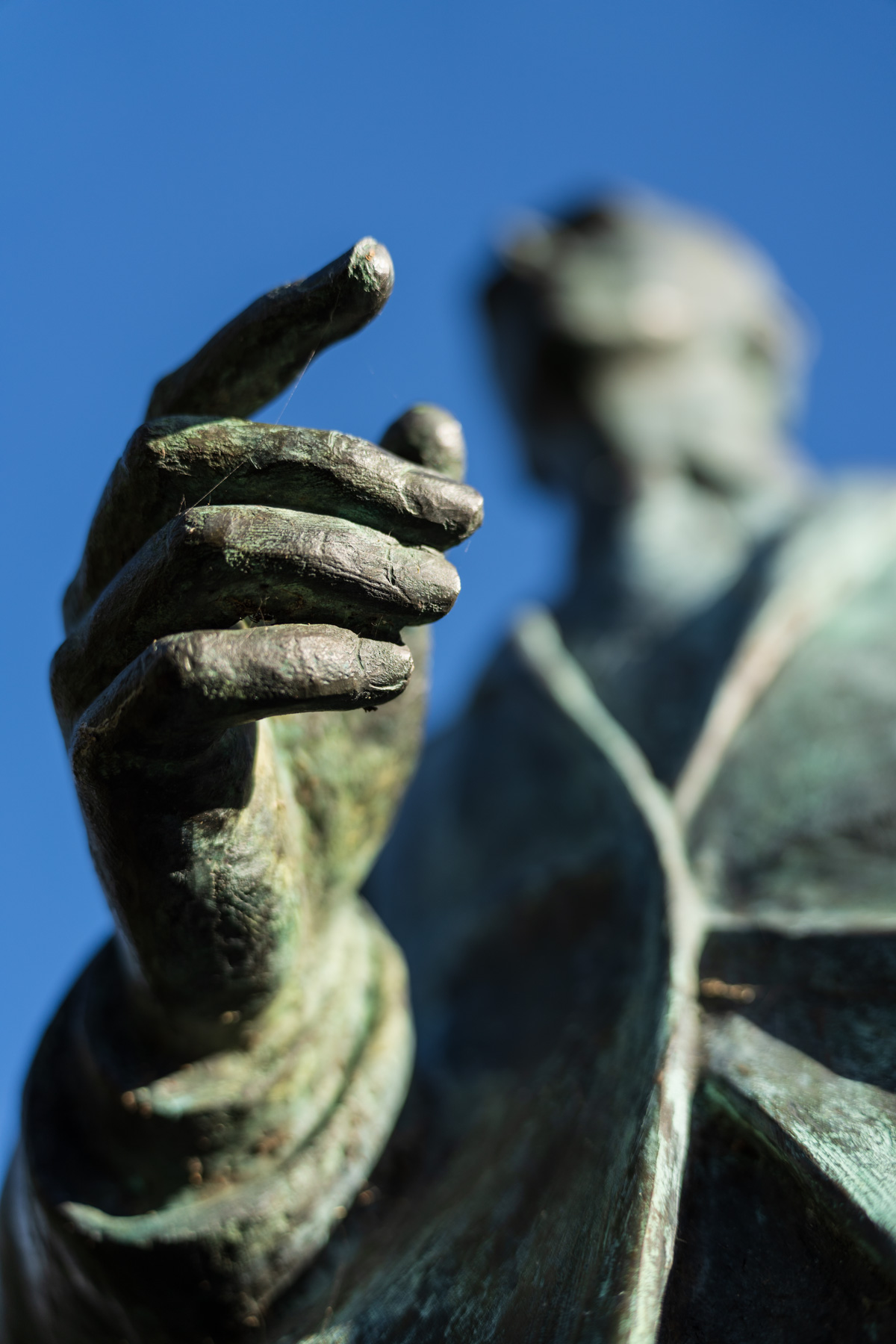
The optical performance of the 35-150mm is well above expectations for an f/2-2.8 design. It’s better than any past attempt at ƒ2.8 on a similar range, and this is down to mirrorless versus SLR body thickness. You can use it wide open at any focal length and be sure of sharpness in the plane of focus, and that is pretty flat corner to corner despite considerable pincushion distortion growing from 50mm to 150mm. The built-in and Adobe lens profiles are essential but not identical – while in-camera JPEGs are very well balanced across the frame, the default Adobe vignetting correction is much too strong.
Without correction this lens loses between one and two stops of light in the outer field when used wide open, with a central zone of around 20mm diameter representing the nominal aperture. The lens profiles boost the gain to compensate and if you set the Sony A7RIV to its ISO invariant optimum of 400, faces at the extreme ends of a group may be recorded as if ISO 1600 was used. For the best results, shoot raw and don’t underexpose (no need to follow the expose to the right mythology though). If you use the Adobe Lens Profile, adjust the vignetting to minus 60 for full aperture shots if you want to remove the effect. If you stop down to ƒ5.6 it’s pretty much gone anyway.
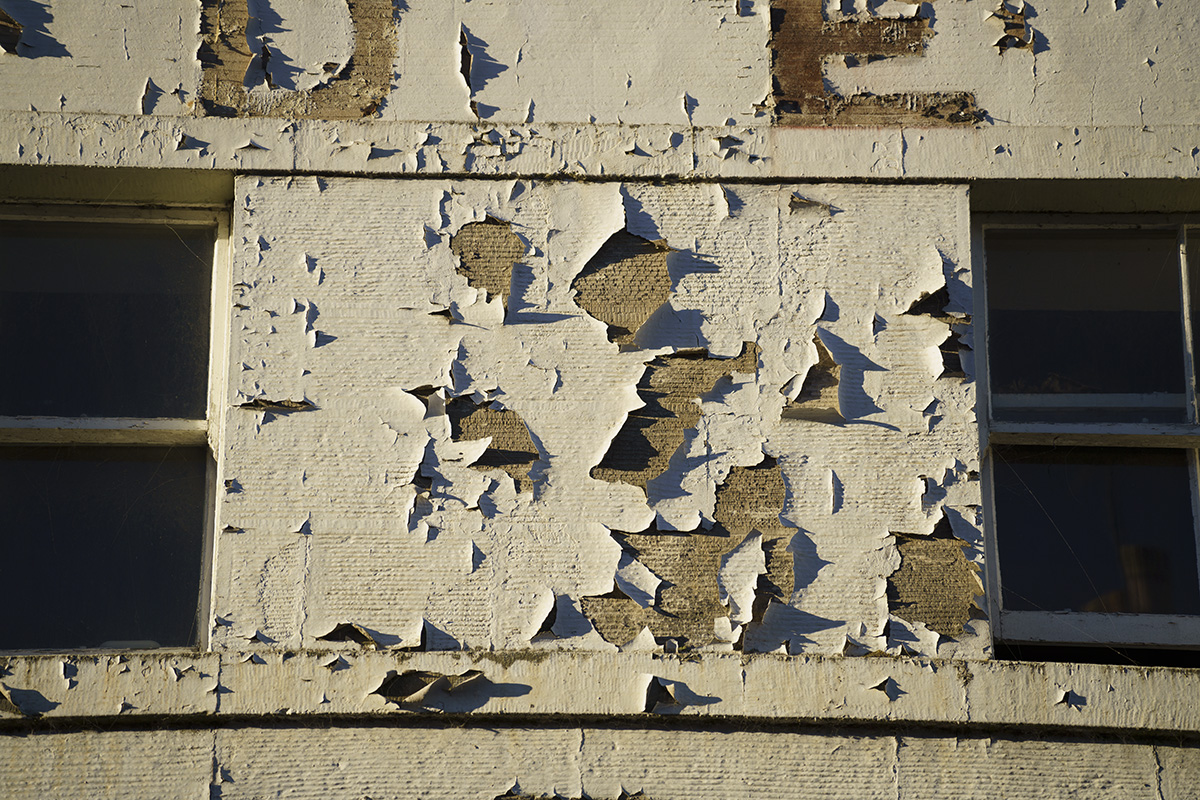
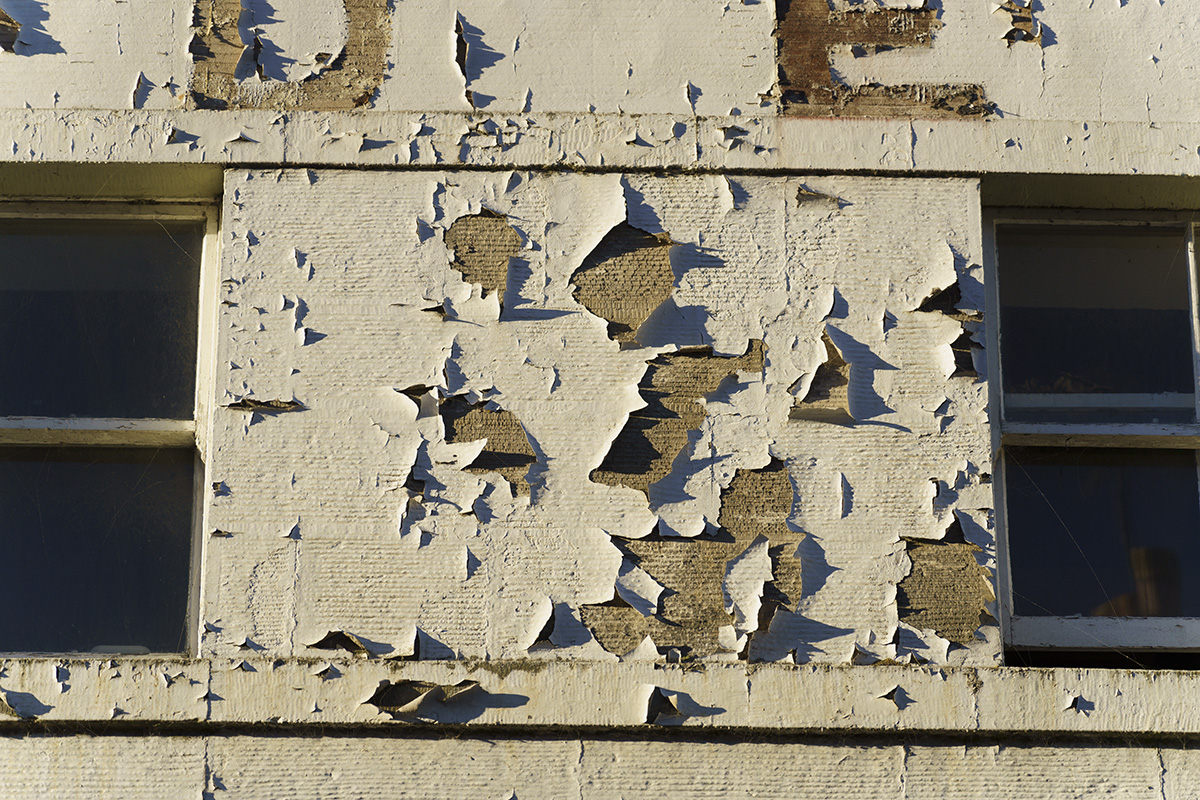
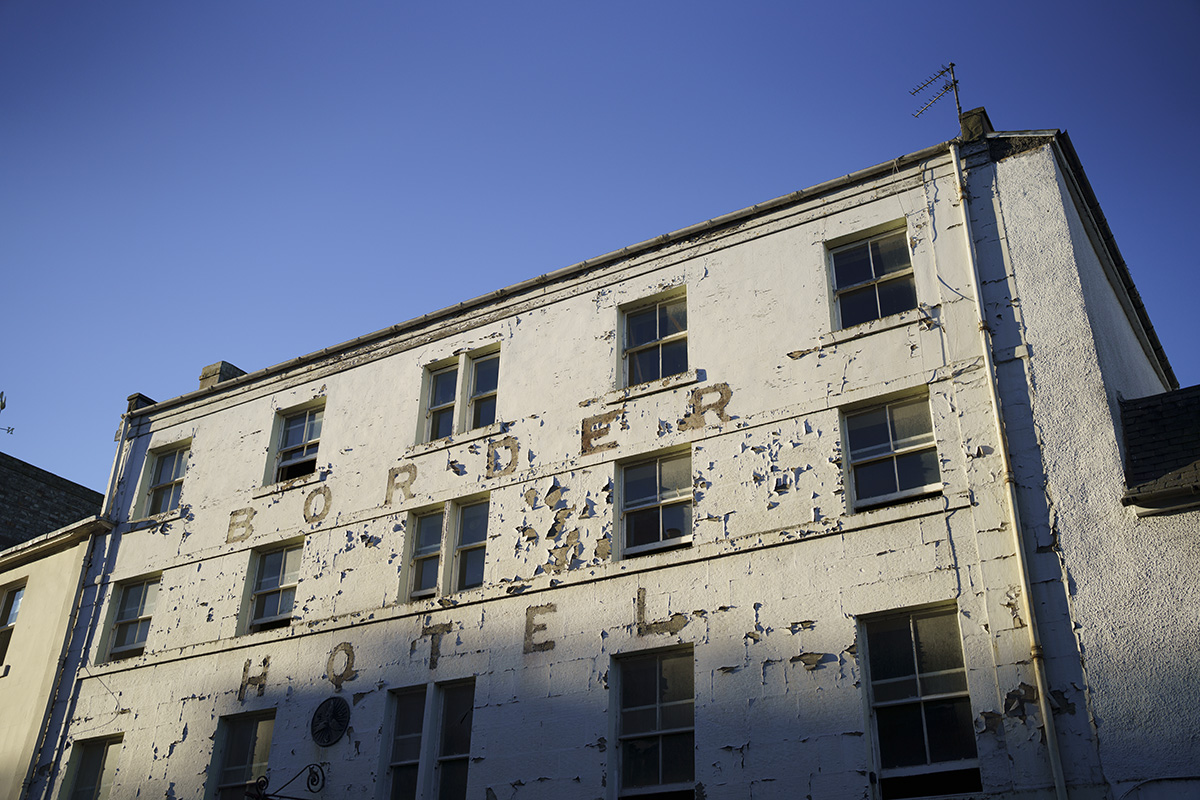
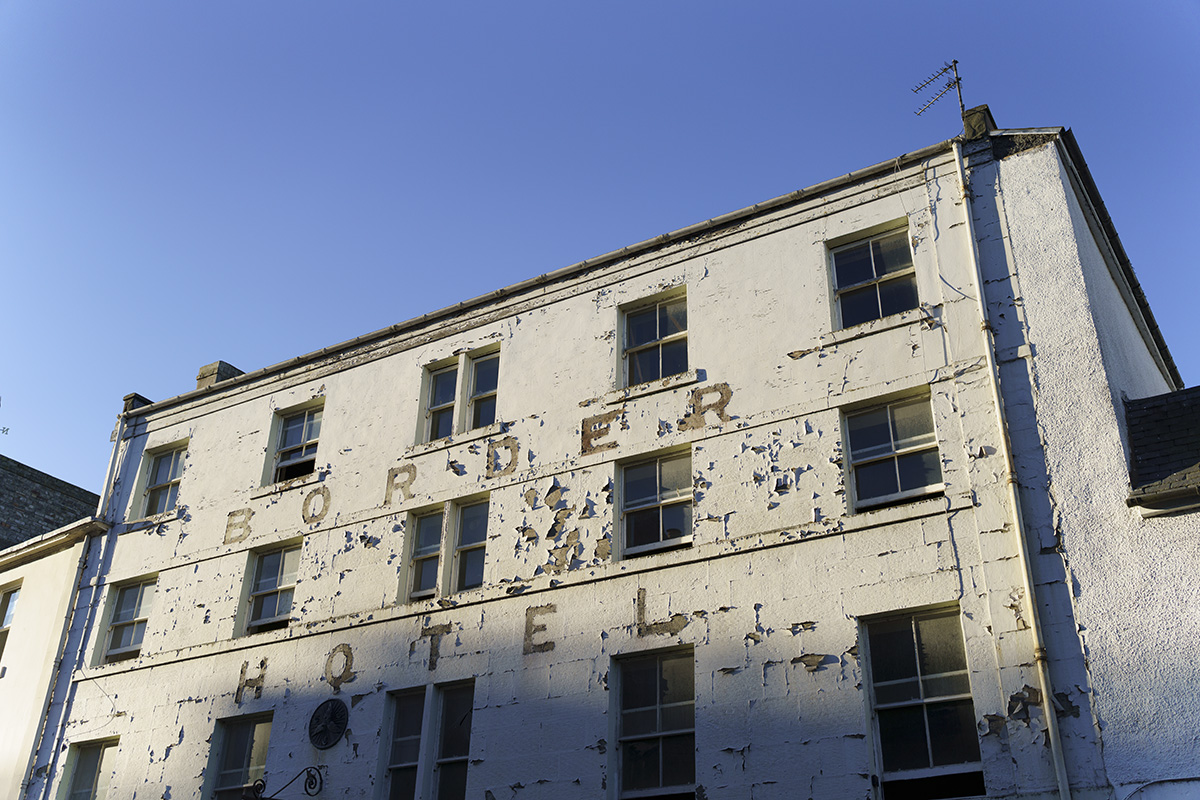
There’s a strong case for just letting the wide aperture vignetting be – don’t correct it at all. Many pictures will look better, including landscapes, portraits and most street shots. The distortion correction, on the other hand, is worth leaving turned on. Because the lens has pincushion rather than barrel distortion over most of its range, the corners don’t get stretched, it’s the centre of the image which is expanded slightly. As this is the sharpest area the correction tends, if anything, to even out the finest detail rendering over the frame unlike barrel distortion correction which degrades the corners visibly in many cases.
When Sony’s 90mm G macro was constantly being called the best lens ever, I tried three examples and all fell short of the standard expected. Just for interest I set the Tamron 35-150mm to 90mm (actually reported 91…) and shot a series from wide open to smaller apertures, on the same architectural distance subject I’d used for the Sony. Despite being on 60MP not 42MP the Tamron zoom was clearly much sharper across the frame than the Sony.
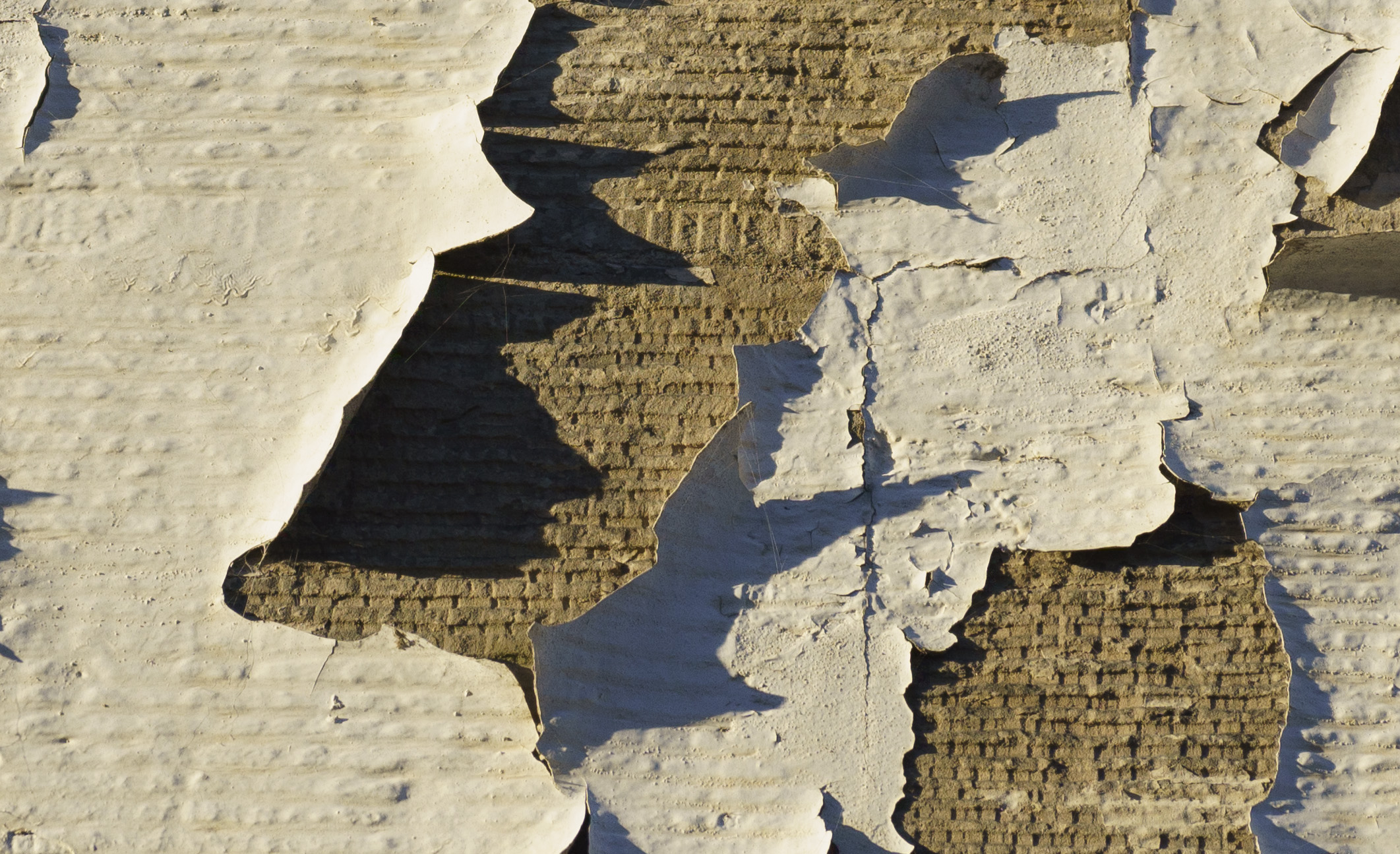
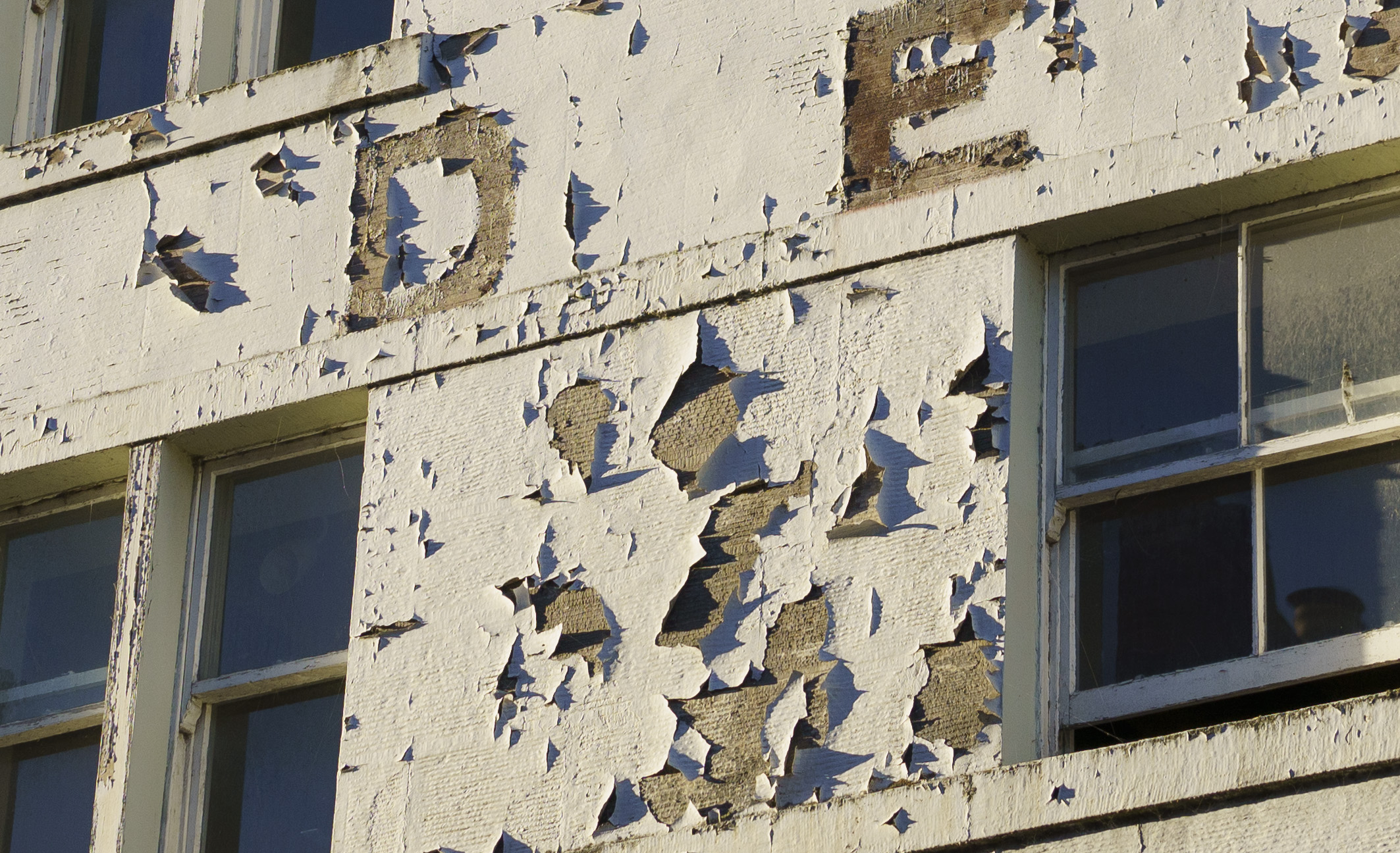
But – it’s a fast superzoom. Plenty of expert voices on Facebook will assure you it can not possibly be as good as a modest range zoom or an acclaimed macro prime. Don’t take their word for it, try the lens. And now we need to look at the downside of such an ambitious superzoom – it’s a large and heavy lens, it uses an unusual internal and extending hybrid zoom design, and it doesn’t focus into the semi-macro range like most other Tamron and competing lenses now do.
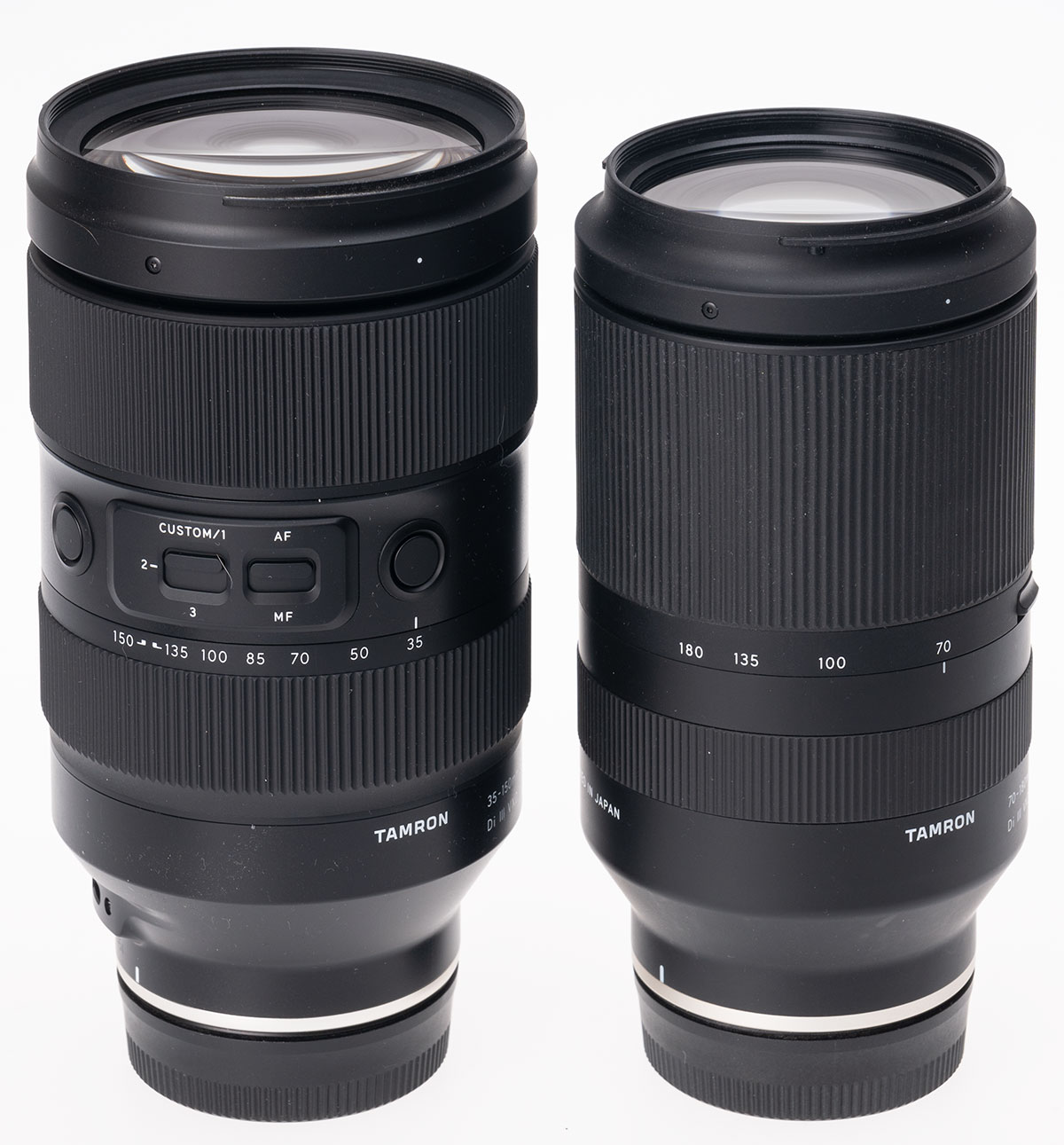
My first step was to replace my slim camera strap with an extra wide heavy duty neoprene Optek – the springy shock-damping handled almost 1.9kg of combined camera and lens round my neck well enough. Often I hold my camera in my right hand ready to lift to the eye and shoot, and don’t let the weight hang on a strap. It was like having a 70-200mm f/2.8 to handle and many users are happy with that all day. I’m not that keen on the 82mm filter thread, but that’s what it has to be.
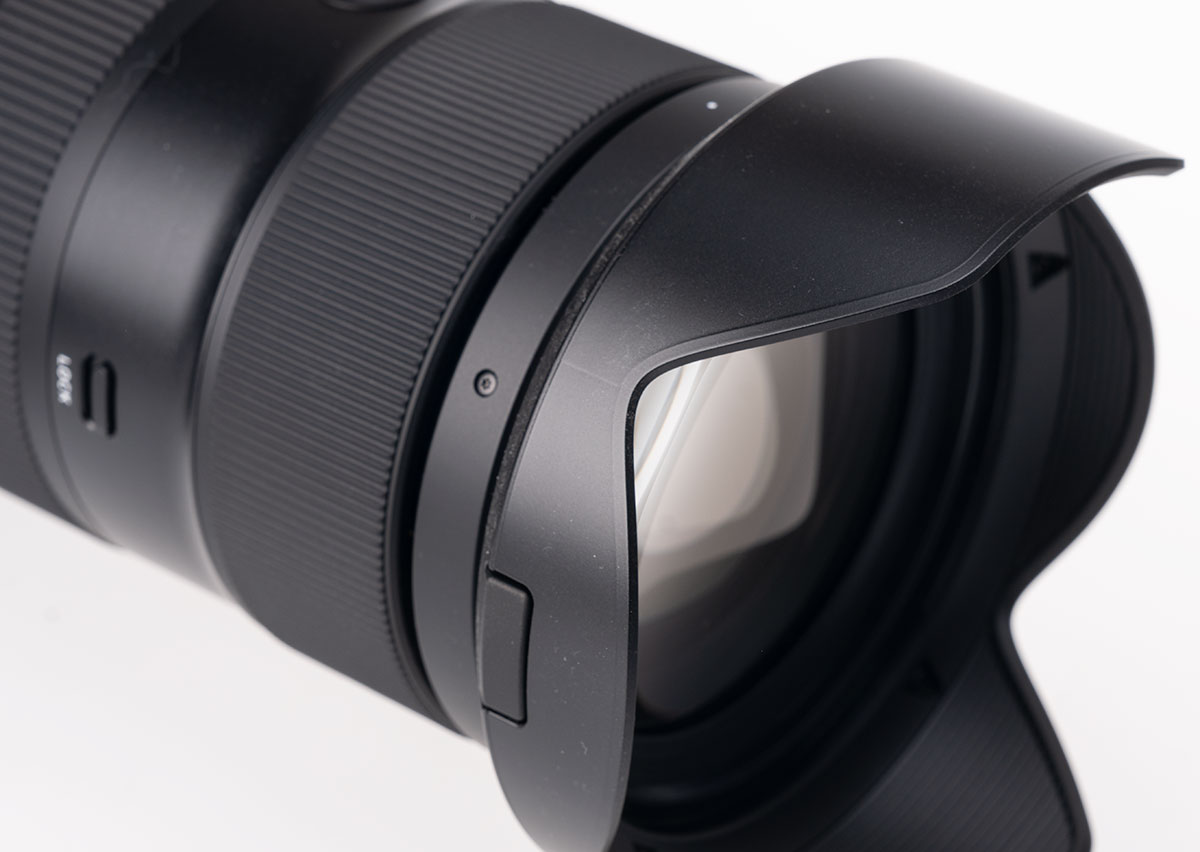
The lens hood has a single bayonet release button set in its rim, and you need to get it the right way up to fit. It’s very secure once on.
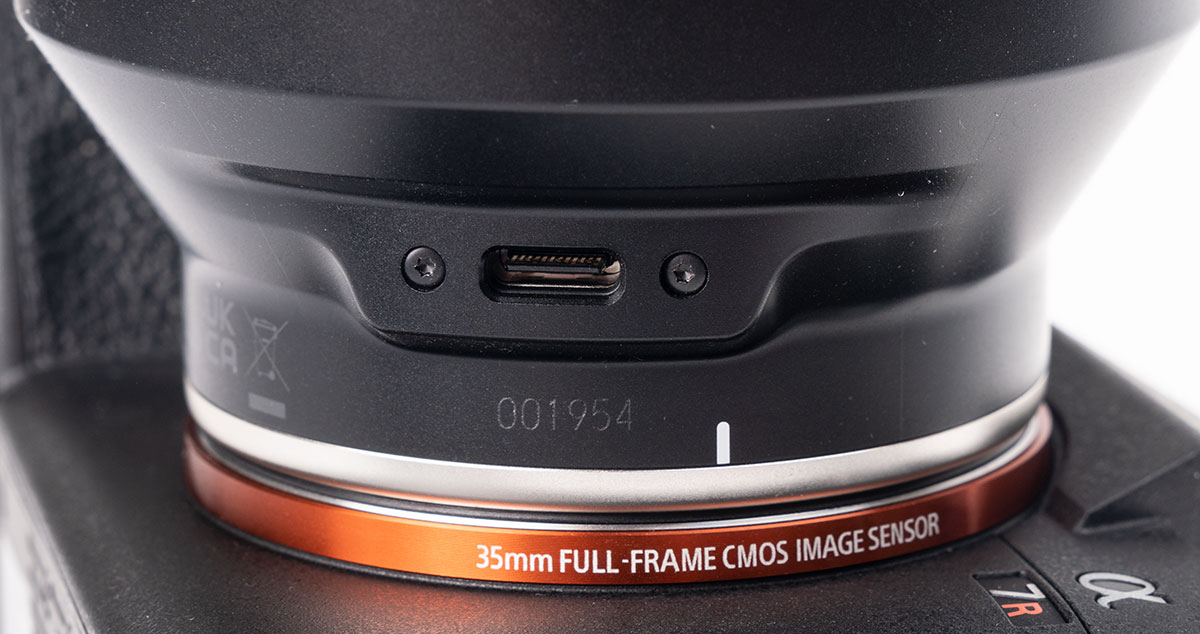
Then you come to the advanced aspects – this is a very fast focusing near-silent voice coil drive (VXD) design, and has three control buttons plus zoom lock, AF/MF and a three-position Custom function switch. With the aid of USB connected software (no dock needed) the lens can be customised for aspects like focus barrel direction/speed and even function (change to control ƒ-stop), and two preset focus points via the buttons.
The zoom ring is placed near the body with the focus ring being the main much deeper front barrel. This is the opposite to existing Tamron zooms and takes some getting used to, but it’s practical with the size and weight of the lens.
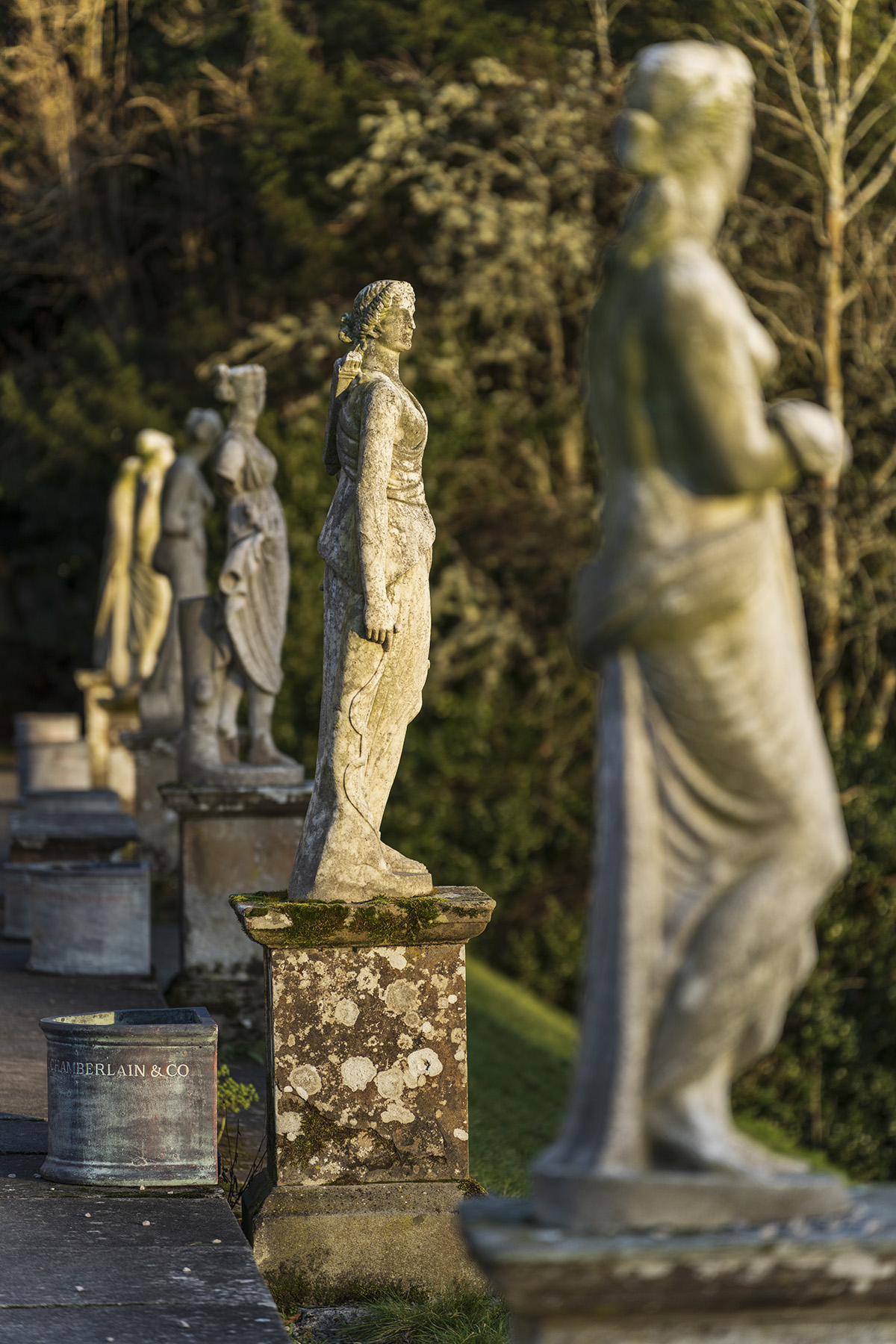
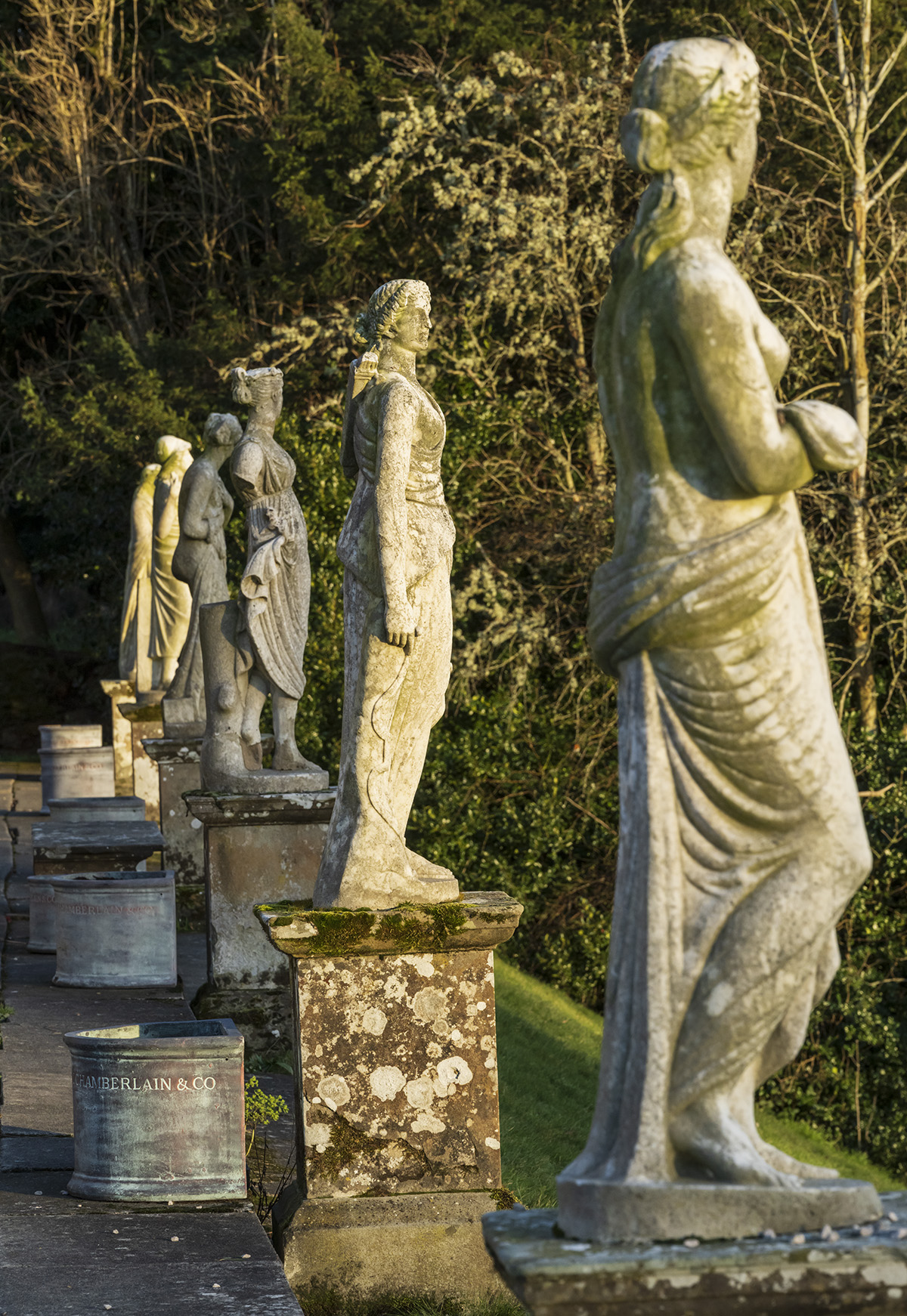
With minimum focusing of 85cm at 150mm to 33cm at 35mm, the subject scale is 1:5.9 and 1:5.7 respectively – that’s a field around 9.5 x 14cm, so not in the wedding ring shot class but fine for flowers, hands and many other close-ups. The 9-blade aperture creates a very attractive smooth defocus and if there are lights or candles in the background this lens gives full aperture bokeh discs, not clipped ellipses, at focal lengths from 35 (f/2) to 60mm (f/2.5) and with only a hint of cat’s eye shape at the extremes of the shot at 80mm (ƒ2.8). Longer than this and you’ll see some degree of this effect though using an APS-C or smaller crop cuts out the more visibly ellipsoid highlight bubbles. Depending on the light source you’ll see some ‘orange peel’ texture which is typical of zooms using moulded aspherical elements – there are many ways to remove this from finished edits. There are no ‘onion ring’ effects which are much harder to remove and occur with lenses using older aspherical moulding methods.
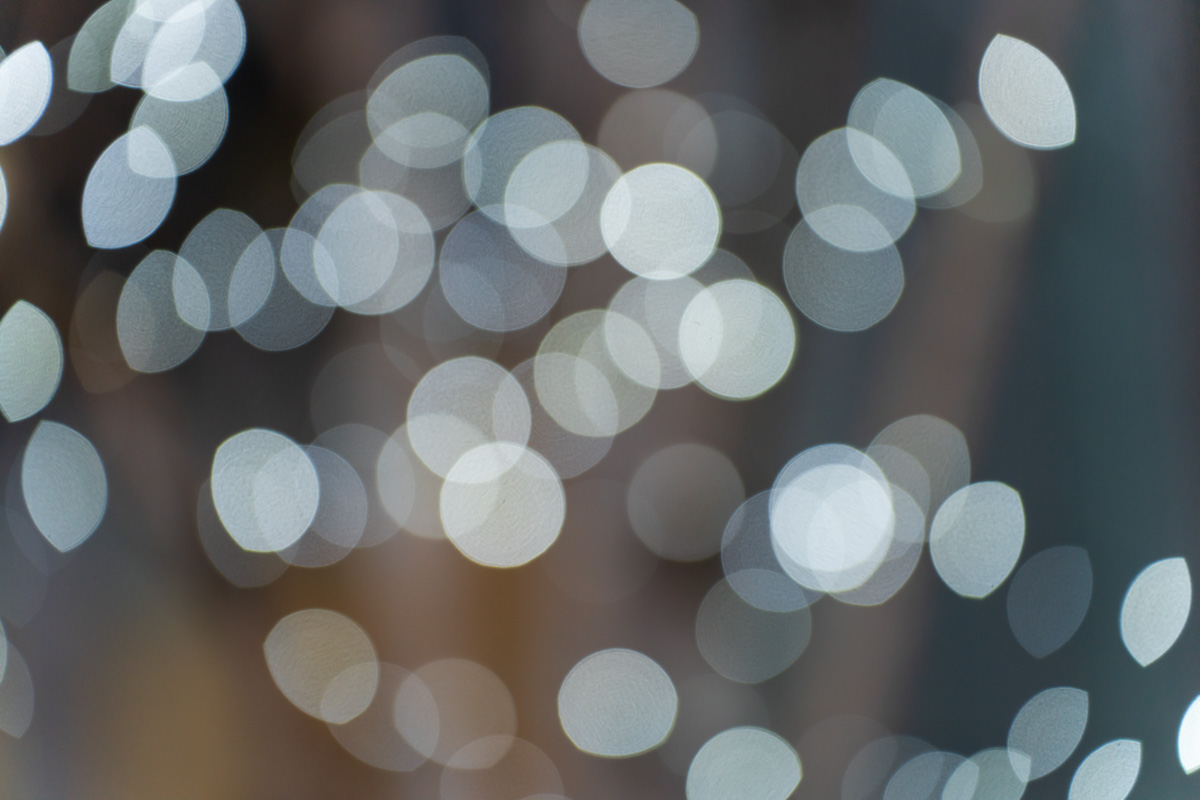
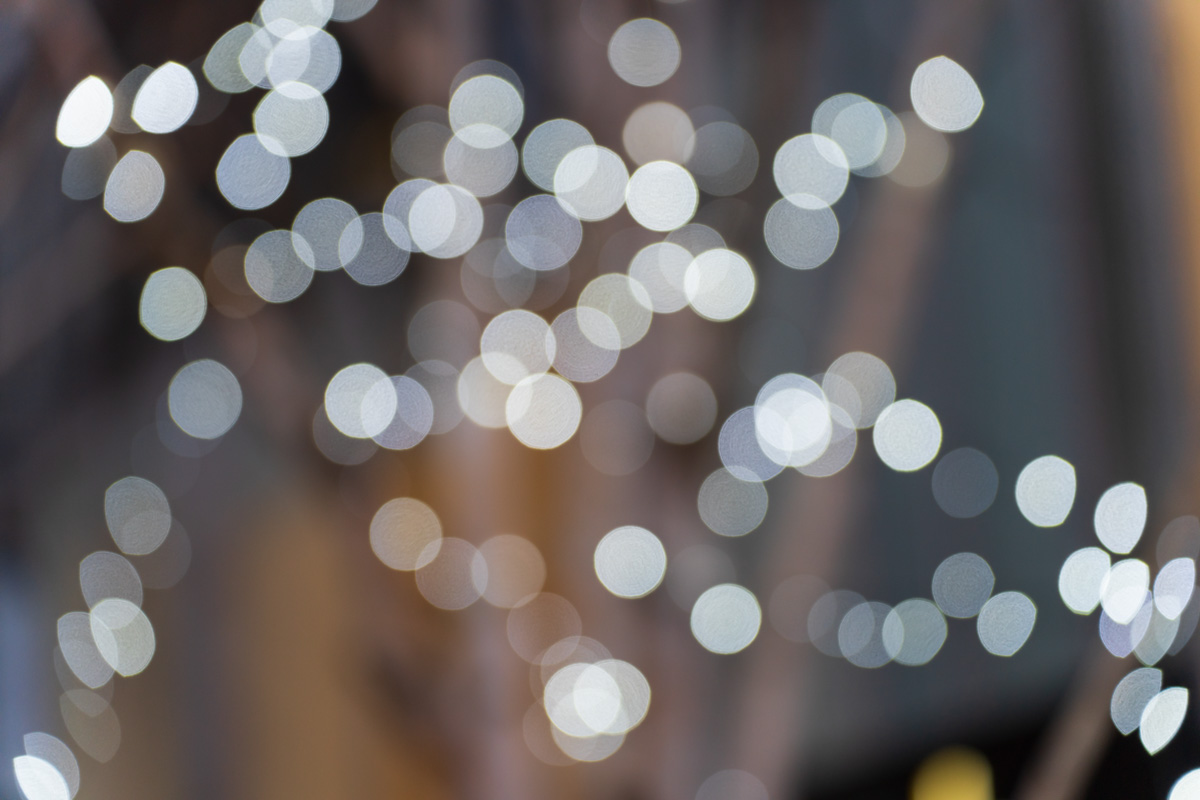
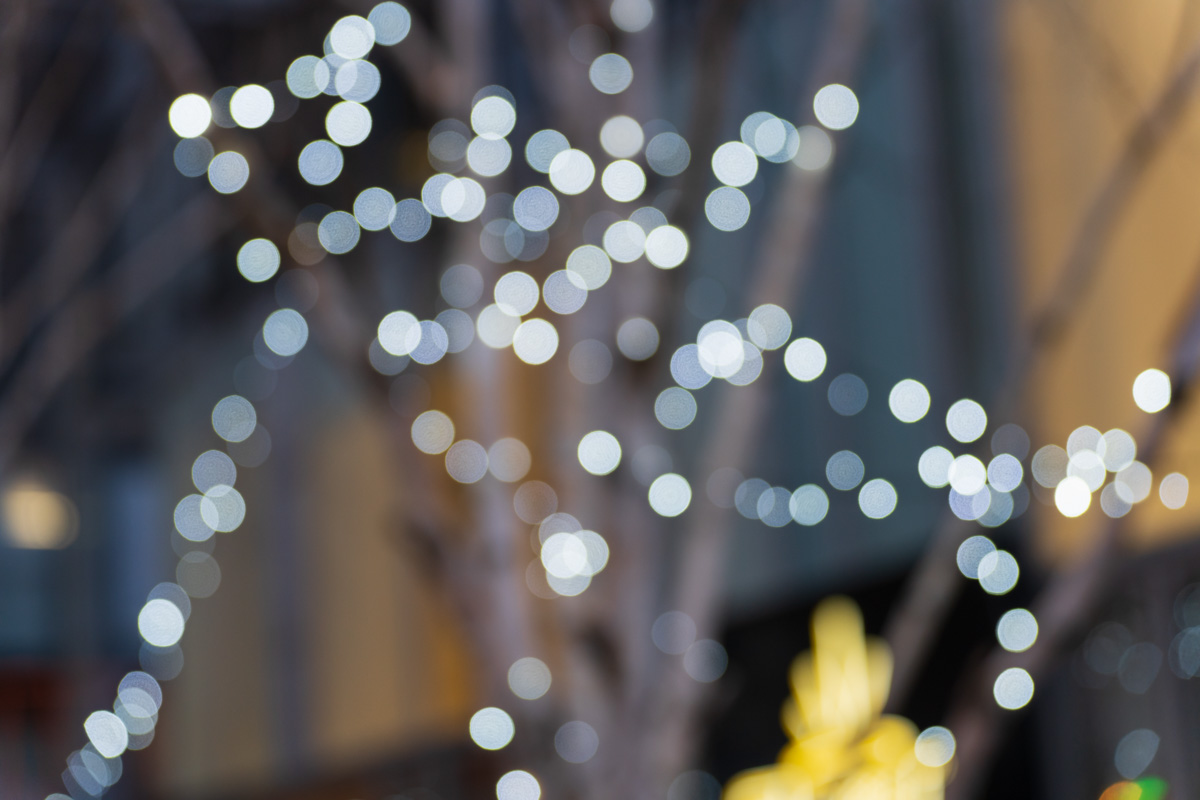
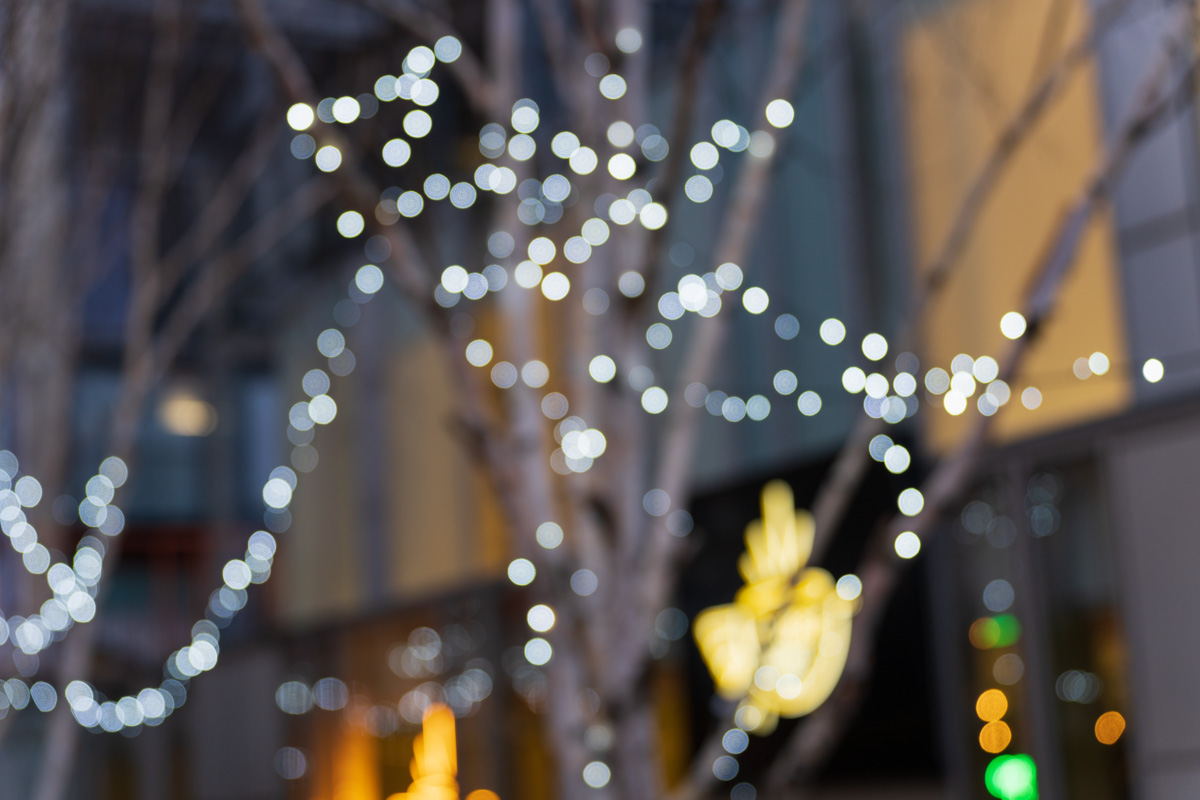
As for real cat’s eyes, the lens behaves perfectly with Sony’s animal and human face detection and eye AF and even managed to keep up with the most impossible close range movement of chickens – fine for eye sharp focus if not for the shutter speed.
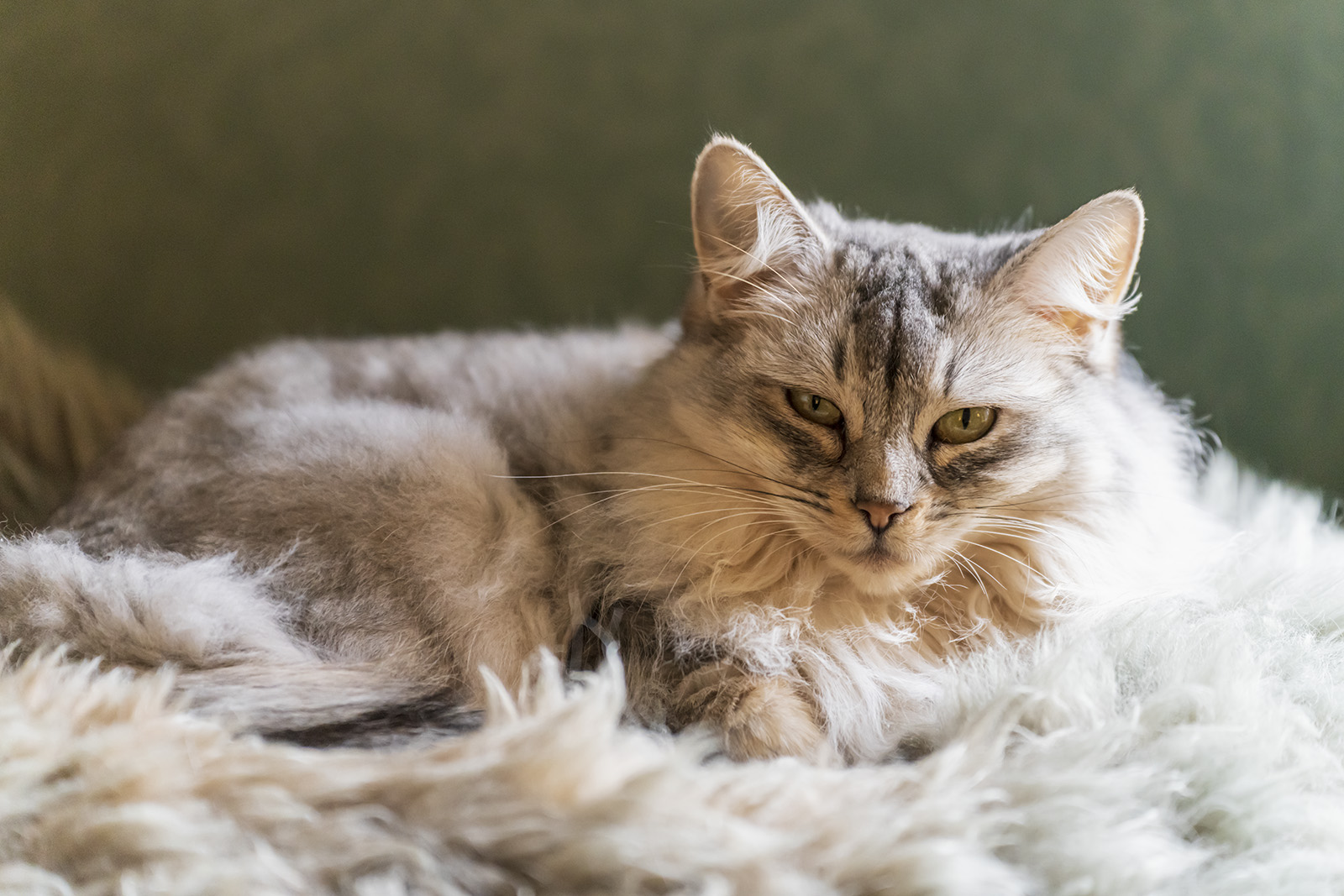
This lens has a USB-C connection (no cover, it’s a waterproof port) and the Tamron Lens Utility, on 64-bit PC or Mac, can customise functions. After thinking the utility was not working (on three different systems) because it said Lens Not Connected when it was, I found you ignore this and click on the Start button for the functions you want to modify – like changing the 1, 2 and 3 positions of the Custom switch to alter the behaviour of the focus ring (direction, linearity, use as aperture ring) or lens buttons (AF/MF, A-B Focus, Preset Focus, Assign Function from Camera, or Clear Settings).
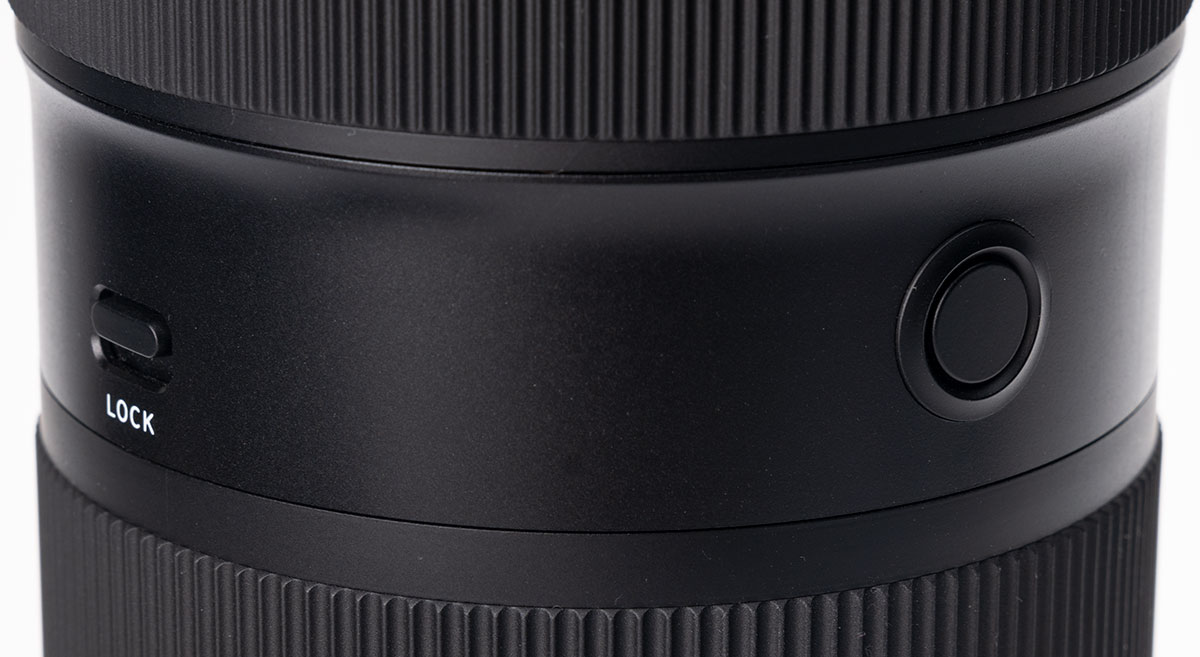
All three lens buttons do the same, which might be missing some useful tricks such as two focus points assigned to different buttons. A-B focus and Preset distance have selectable focus speeds, and are strictly Movie functions (you have to press the Record button in Movie mode to program the distances, then use the lens buttons to activate the focus change during filming). The lens is fairly silent in focusing but an external microphone is desirable. It has almost no focus breathing regardless of the focal length set, though use at full aperture will produce some shifts as the bokeh expands and contracts – the real angle of view remains very constant from close-up to infinity.
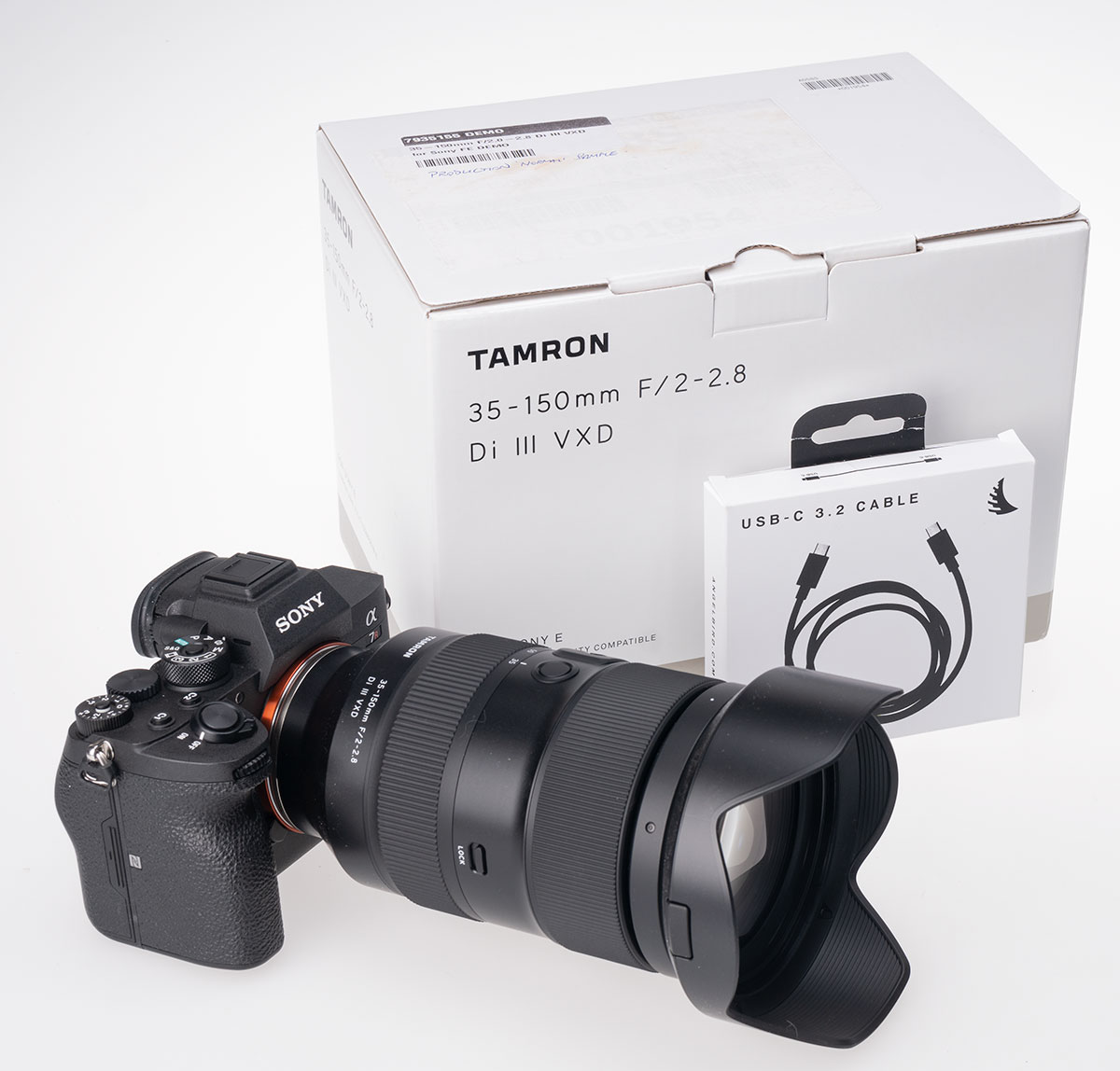
This lens costs £1,599 (editor’s note: 2022 price at time of writing) so you need to know you need it to invest. It hardly came off the camera in six weeks partly because of the convenience of not having to change lenses, and just carrying the camera and this one lens.
The lens now sells for around £1800 new (link to Sony version at WEX) and £1300 used.
It is also now available (update) for Nikon Z link here to WEX – bundles with bodies are also offered.
My comment: we have assumed for years that it’s best to wait a year after launch before buying as prices fall rapidly. This is no longer the case as inflation and issues with worldwide shipping costs mean prices are rising and set to rise further. Don’t assume that you can save by delaying, but saving by sensible used market buying is still practical.
– David Kilpatrick
For further information, visit:
The new 20mm f/2 DG DN Contemporary lens for full frame E and L mounts from Sigma will sell for under £650 in the UK from February 25th. It extends their compact, metal barrel prime ‘I’ series range which includes f/2 models in 24mm, 35mm and 65mm focal lengths.
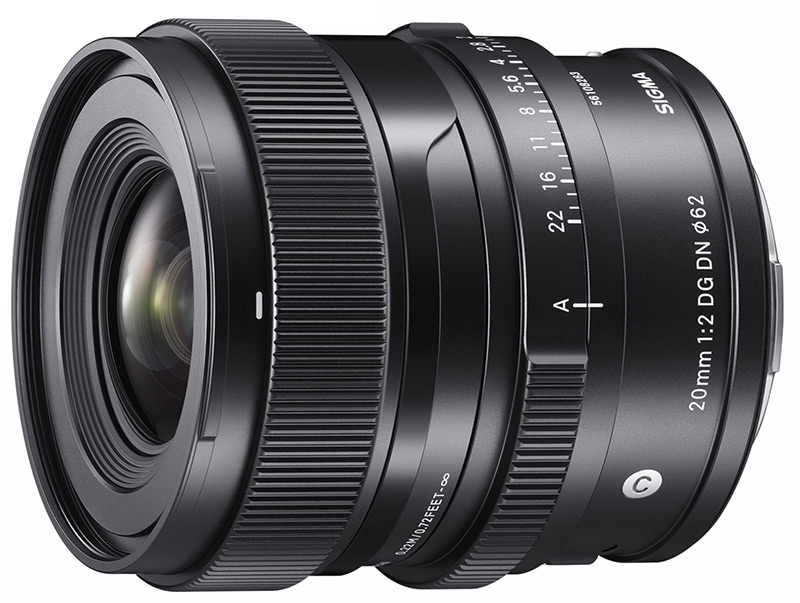
It also offers a filter-friendly alternative to the very large and heavy 20mm f/1.4 Art lens. It uses 62mm filters, weighs 370g and is just 72.4mm long (much the same as the 24mm f/2). It has a magnetic lens cap and all metal construction, including the bayonet lens hood. A second plastic clip-in lens cap is also supplied. The design with a physical aperture ring is similar to Sigma’s high-end ciné lenses.
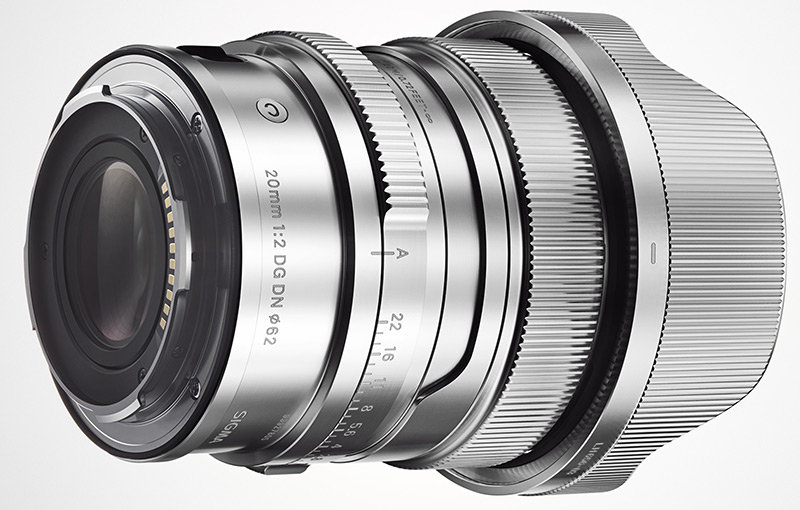
It uses three high-precision glass-molded aspherical lens elements, one SLD element, and one FLD element. Suppression of sagittal coma flare makes the 20mm f/2 ideal for night sky with stars near the extreme corners of the field.
Other specifications include:
For further information:
#SIGMA #SIGMA20mmF2Contemporary #SIGMAContemporary #SIGMAContemporaryPrime #SIGMADGDN #Iseries #SIGMAIseries
You can now view the page-turn PDF of our latest issue here free of charge. If you appreciate real magazines and would love to find the beautifully printed edition dropping through your letterbox every two months, please do take out a subscription. Our readers are our lifeblood and they enable us to create a unique publication – and you don’t need to ‘buy us a coffee’ or donate to make the magazine happen, you just have to subscribe. And be sure you keep those copies safely (not too many at six a year). One day they’ll be worth more than you paid for them…
CCJanFeb2022-appYou can now read our complete November/December edition, mailed on November 1st, here. To receive Cameracraft the day it’s published just subscribe on the Pocketmags app – https://pocketmags.com/f2-cameracraft-magazine – for digital delivery and to our printed editions using the subscription options here.
CCNovDec2021Mailed to our subscribers on September 1st and also published on Pocketmags, it’s now time to let everyone read the current magazine. You’ll notice that it contained a feature about The Photography Show, which reached subscribers over two weeks before the show. It’s not very often that we have articles which are time-sensitive but this is one reason it pays to subscribe and get Cameracraft hot off the press!
CCSeptOct2021Published and mailed to readers on July 1st and also published via our Pocketmags digital subscriptions the same day, this edition is now free to read as a recent back issue. Enjoy!
CCJulAug2021With the introduction of a super-compact 90mm f/2.8, Sigma has made the I-series of high performance full frame mirrorless system lenses match the very best classic kits of the rangefinder era.
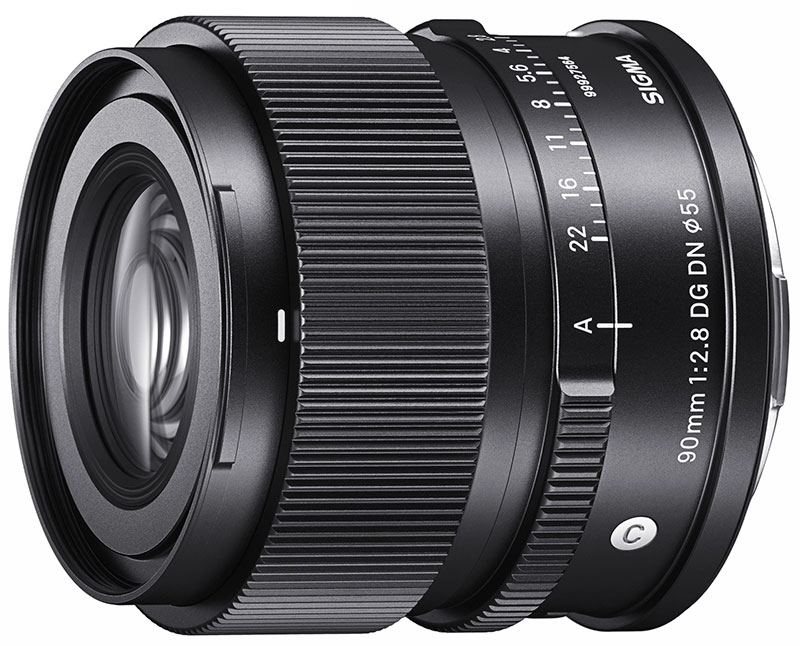
The I-series lenses are all fixed focal length (primes) and feature aperture control rings as well as fast autofocus with MF/DMF via the lens focusing barrel. The construction is solid metal, not a thin skin of metal over plastics as found in some earlier primes from makers like Zeiss, Samyang, Tamron and the Sony and Panasonic camera brands themselves. Every component in the lens is metal down to the stepper motor focusing carriage and the mounting of the glass elements.
It’s a return to the standard of Leica rangefinder – or Contax G autofocus – lenses updated for users of the Sony E (FE) and Sigma, Leica and Panasonic L mounts.
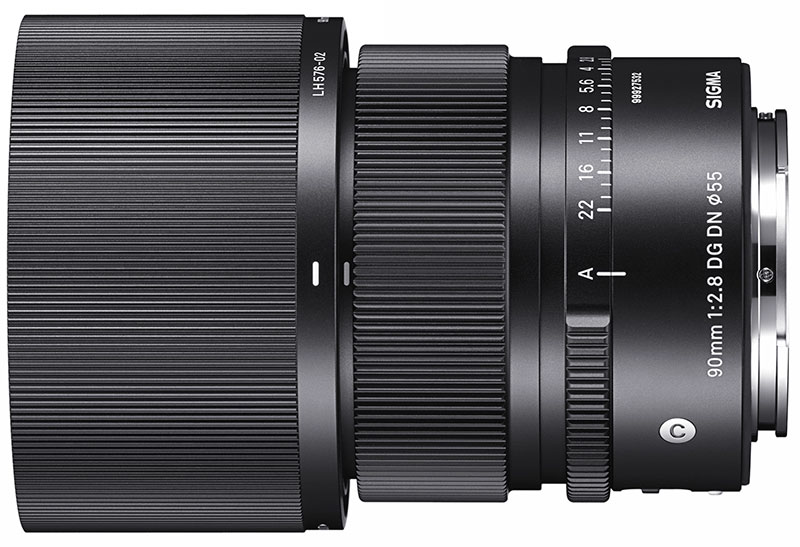
We’ve only tried the 60mm f/2 in this series so far, but the performance supported the company’s claim to be delivering very high resolution suitable for 60 megapixel or higher sensors. The 90mm f/2.8 has special attention to chromatic aberration in its design which uses no fewer than five SLD (super low dispersion) elements. We expect to see foreground and background blur unaffected by colour-bokeh shifts, made very smooth by a nine-bladed aperture and aided by third-stop f-stop setting on the lens or via the camera. The closest focus of 50cm compares with a typical figure around 85cm for most 90mm lenses, and yields a 0.2X (1:5) close-up.
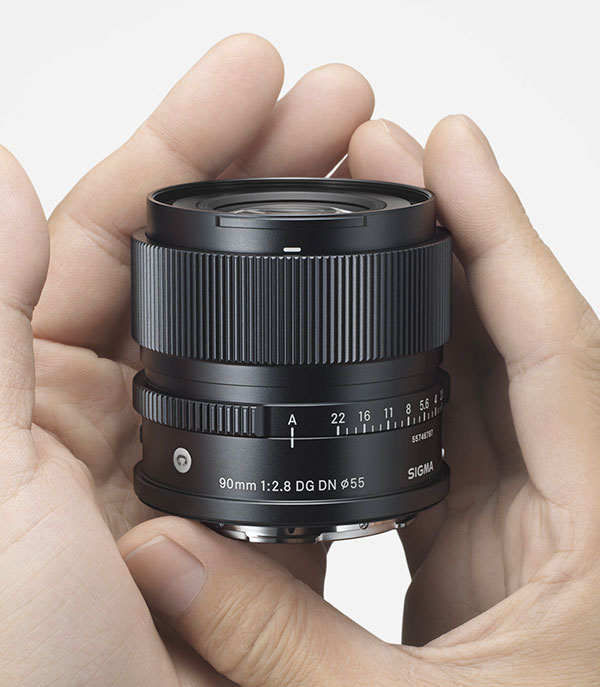
This lens accepts 55mm filters and weighs only 295g – you can see the size ‘in hand’. It can be teamed up with the 24mm f/3.5 and 45mm f/2.8 in the same range weighing in at less than 750g overall. Combined with a lightweight smaller body like the Sony A7C it’s the closest a digital shooter can get to have a Leica with autofocus.
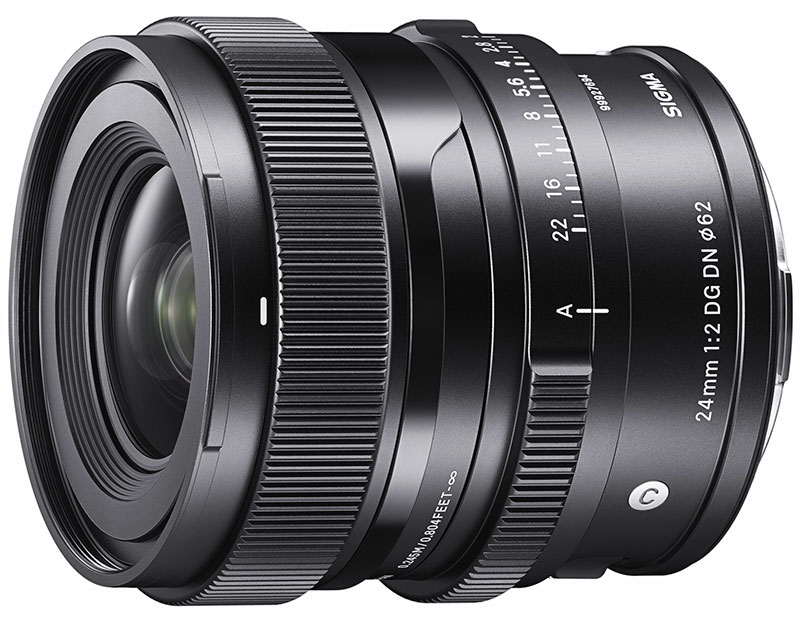
Alongside the 90mm, also available from September 24th will be a faster version of the 24mm at f/2. It’s sure to attract buyers at the same £549.99 RRP UK ($669 USA) as the 90mm and although it takes 62mm filters and is a little bigger, weighing in at 365g, but it’s really part of the f/2 I-series which now includes the 35mm and 65mm so well matched there. Focus is down to 24.5cm, 1:6.7 scale, which is not exceptional when some 24mms achieve 1:2 but entirely practical.
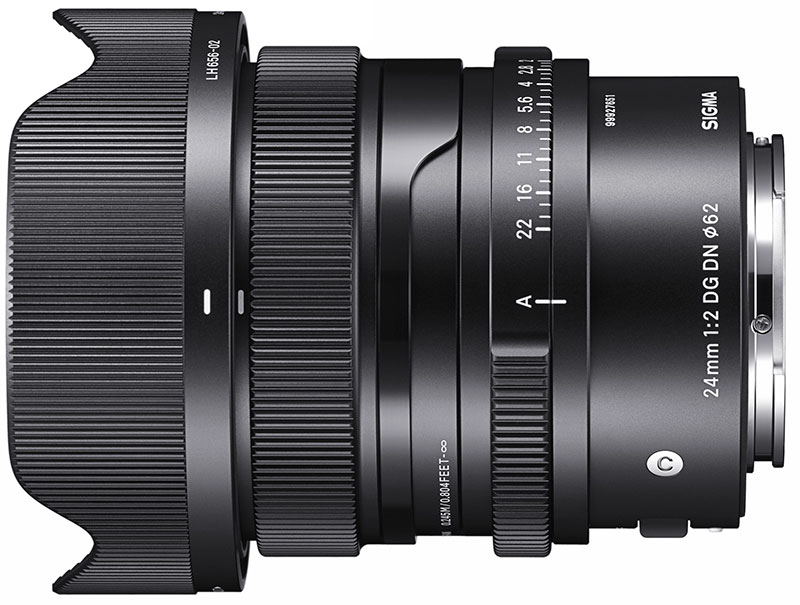
As for cost, it’s less than Sony’s 24mm f/2.8 G as well as a stop faster and much less than the Zeiss Batis 25mm f/2 or the APS-C only Sony Zeiss 24mm f/1.8.
Both these lenses, and the whole I-series, are compatible with Sony’s high-speed autofocus and they’re all made in Japan. The standard now set by Sigma are well-known and they seem to be the only maker left producing new lenses with dust and splash resistant all-metal barrel and mechanical design, brass mounts, and resolution to match the most demanding sensors.
To see Sigma lenses available at WEX: https://tidd.ly/3z0F00u
To see Sigma lenses available at Park Cameras: https://tidd.ly/3BUWf5f
On our doorstep (writes publisher David Kilpatrick) or just a short drive away there are many rivers and burns coming down from the Cheviots, the Lammermuirs, the Southern Uplands and Tweedsmuir. Some pass through steep small ravines or cleughs (similar to ghylls in north-west England). In both Northumberland and southern Scotland, they are called linns. Some just get called waterfalls, like the Grey Mare’s Tail on the road between Selkirk and Moffat, because they are big enough. Some are very hard to reach or don’t offer potential for photography; some are easy to get to but almost local secrets, without very clear footpaths or signs. If you visit Kelso, Jedburgh or Coldstream here are three which you can easily visit by car with normal walking footwear in the course of a day. The first is just a few minutes from Kelso.
Stichill Linn is at the site of a former mill on the Eden Water, in the grounds of the Newton Don estate. During the winter of 2020/21 the estate put a big effort into making the riverside, woodlands and the linn accessible after many years of neglect which had made it hard to reach and at time impossible to photograph without obstructions. Though you need to know which minor road (from Ednam) to park on and then where to find the start of the signposted footpaths, once you are on the trail it is an easy walk with occasional boggy spots where small streams cross the path. Wellies are advised, and also help if you plan to cross the river and find positions for a tripod. It is lovely in autumn as the woodlands are mostly deciduous. This usually means the last week in October and first in November. This spot is good for taking your dog as there’s no livestock to encounter and it is very safe to be off the lead.
My next one is Roughting Linn, 20 miles away over the border in England. It can be reached from the village of Ford, or from the A1 side via Lowick. Although the farm estate the woodlands and linn are located on allows access, the paths alongside the stream are not maintained in the same way as Stichill. It’s best to wear shoes or boots suitable for moor or mountain and be prepared to use a stick (or a tripod) to deal with slippery or sloping sections often close to sharp drops into the burn. Wellies are essential to get to the classic position for photography. Sadly some of the moss on the boulders has sheared away and as normal some woodland debris has landed. It’s tempting to go in with help and remove the tree limb which is new feature. The area round the waterfall has some fascinating rock faces, caves, twisted trees and countless interplays of stones, water and light. When I took this in mid-May 2021 the woods were also full of bluebells. There is no phone signal here, there are few visitors and after negotiating a steep scramble back to the path I realise you should really do this in company, not alone. Again, this location does not involve crossing farmland so dogs are OK, but the stream at certain points would not be a welcome invitation!
My final one here is Hethpool Linn, near the farm of Hethpool which is south of the Yetholm to Wooler road, on the College Valley road closed to vehicles except by permit (limited numbers). It’s national park, and also just off St Cuthbert’s Way. There is a car park at the end of the public vehicle access. Beyond it you can walk miles up the College Valley, or turn back a bit and go right down a track leading from the big farm as if following the well-known walking route. Looking at a map you might think the linn could be reached from the east side of the College Burn, but that’s a mistake. Before you reach the crossing, a permissive footpath (without signs to the waterfalls) crosses farm fields, over a stile on the left of the track. This takes you between the farm woodland plantation, and the wooded banks of the river. A couple of stiles or gates later the sound of the water can be heard and small paths through scrub take you to the edge of the ravine. At some points you can climb down and where the path crosses a wooden footbridge the flow is shallow.
However, below the bridge the river enters a narrow deep mini-gorge, the linn itself. You take a footpath to the left after crossing the bridge and soon enough encounter the more dramatic stretch. The path then drops down, an easy enough scramble to a calm shallow pool of clear water with a pebble beach. The fast-flowing gorge above is not a tripod time exposure – it’s me clinging on to rocks right over the water, holding camera in contact with contours of the stone able to give it a stable support. Again, there is no phone signal and I realised it wasn’t that clever to be balancing (with £4k of camera and lens!) over a deep fast-flowing turbulent plunge a couple of metres below. I had left my camera bag and tripod (useless on the ledge) near the path high above and lowered myself down the rocks to the viewpoint I wanted. It’s something which people clearly do but safer in company.
As for the pool just round the bend after the narrow gorge ends, it’s not all that photogenic but you could bring your own naiad along. Maybe with a wetsuit… this water looks inviting and in the heat of summer it would be fine, but it’s a cold mountain stream nevertheless. Hethpool is very definitely farm land and lambs were everywhere on the walk, so taking a dog to enjoy this very dog-friendly pool would require care and control.
These three linns were photographed on separate sorties, with Stichill Linn in early March a mid-day venture, and both Roughting Linn and Hethpool Linn early evenings in June. Winter can be different but the bare trees let in more light and heavy rainfall transforms any of these.
I now offer an AirBnB in Kelso – the former offices of PHOTOpro, Photon, Freelance Photographer, f2, Master Photography and Cameracraft converted to a flat by my daughter and son-in-law who sailed the Caribbean for a yea, and set it up so it would be suitable for visitors and for their return while buying a home nearby. Everyone loves the town and it’s great to welcome them. I am happy to give pointers to help visiting photographers and the flat has 100Mbps fibre broadband. Link here. After returning they converted the opposite wing of the house so in addition to East Wing there’s also West Wing AirBnB now.